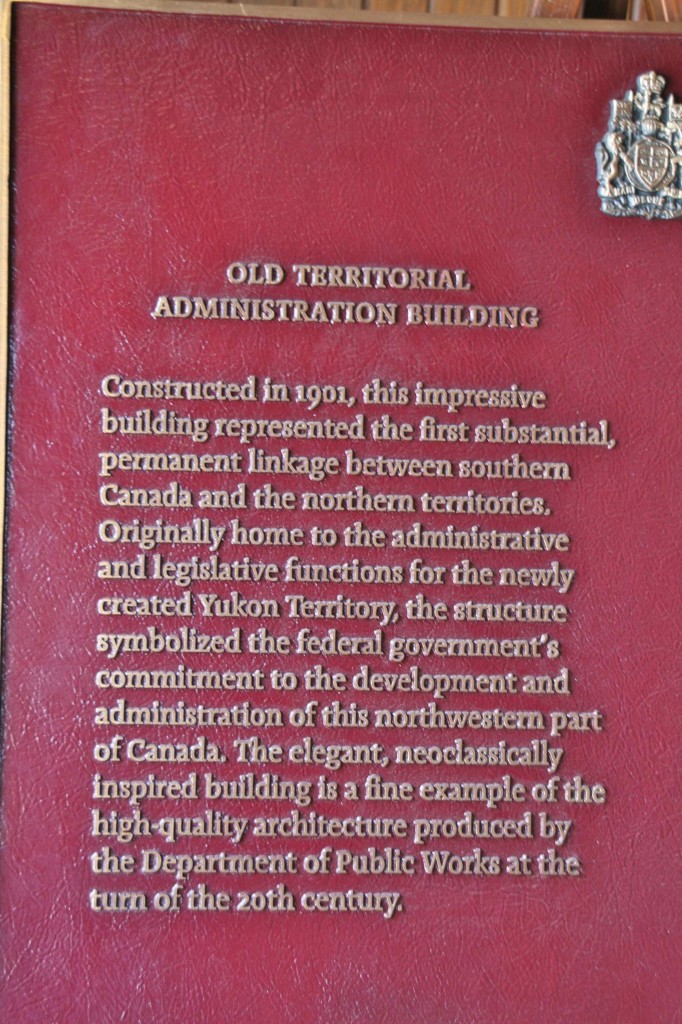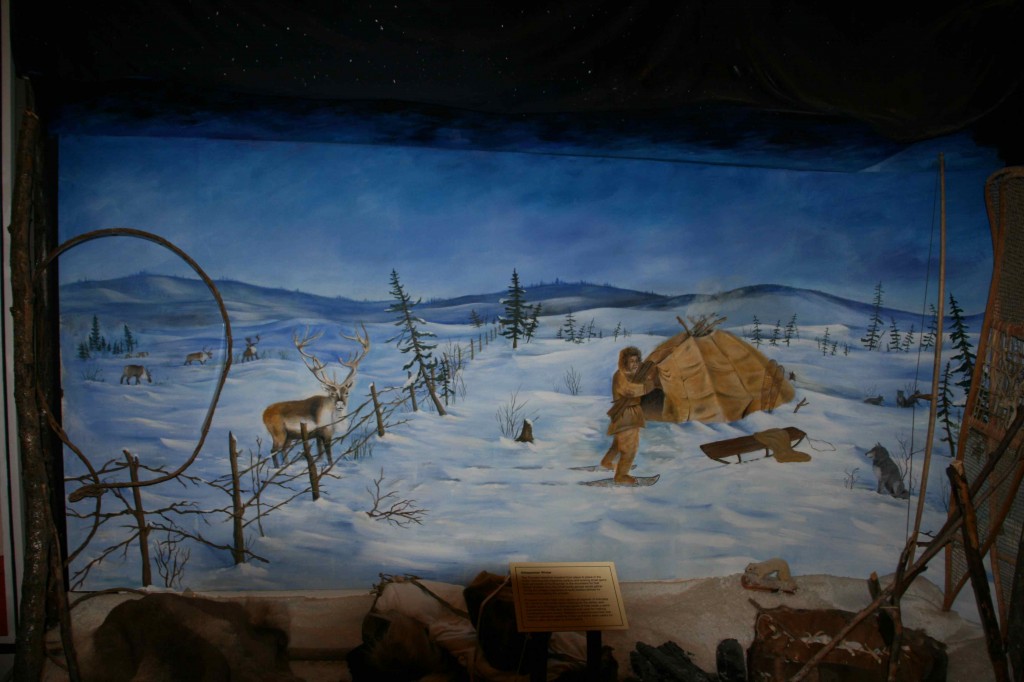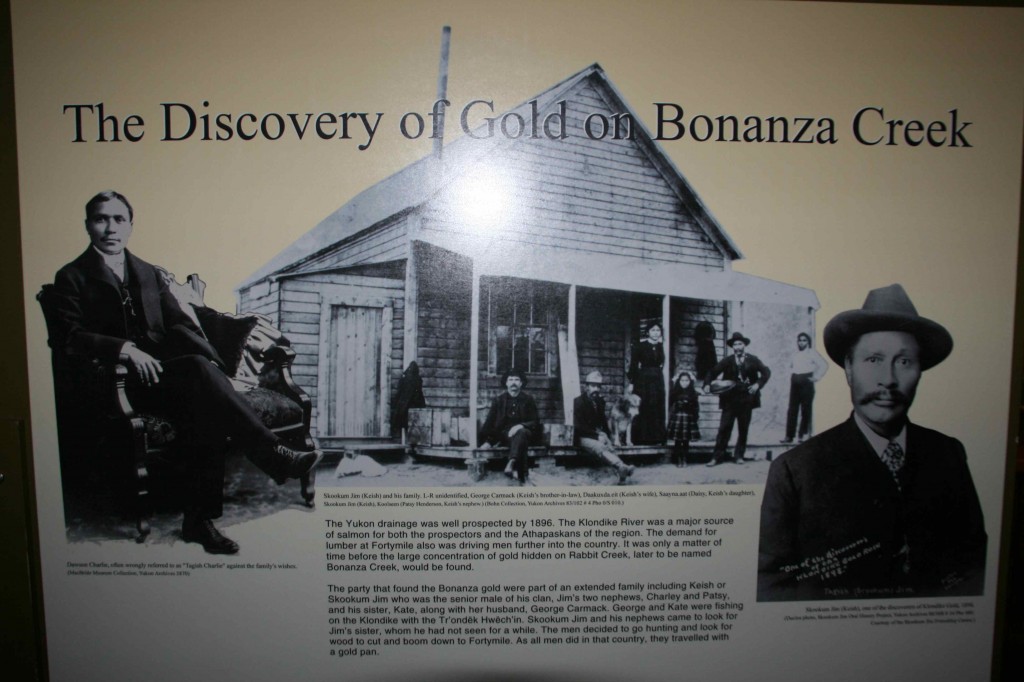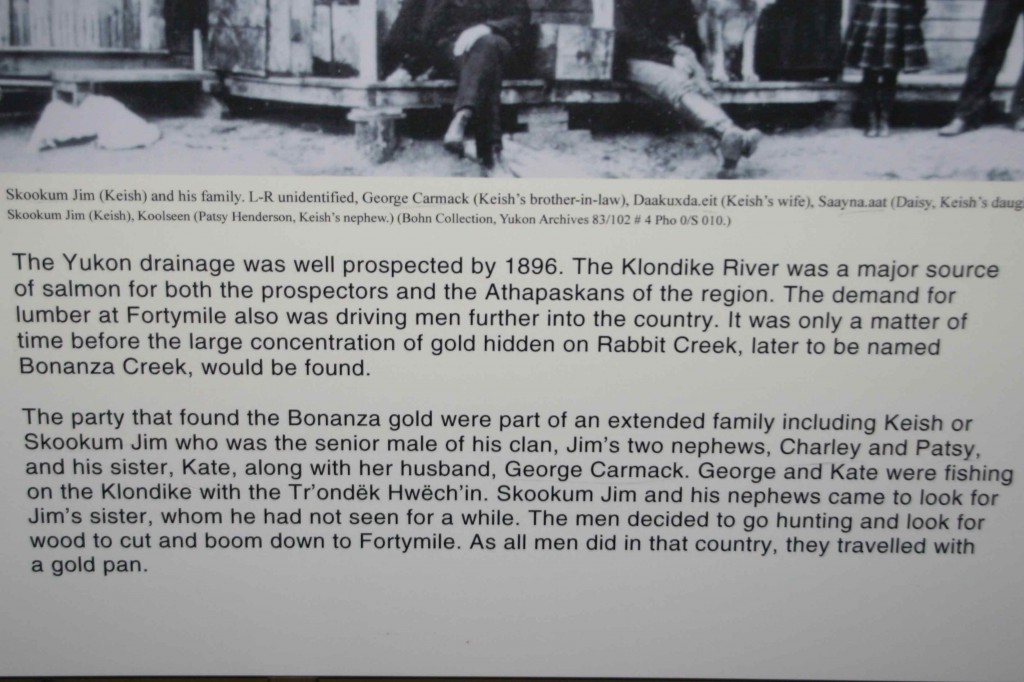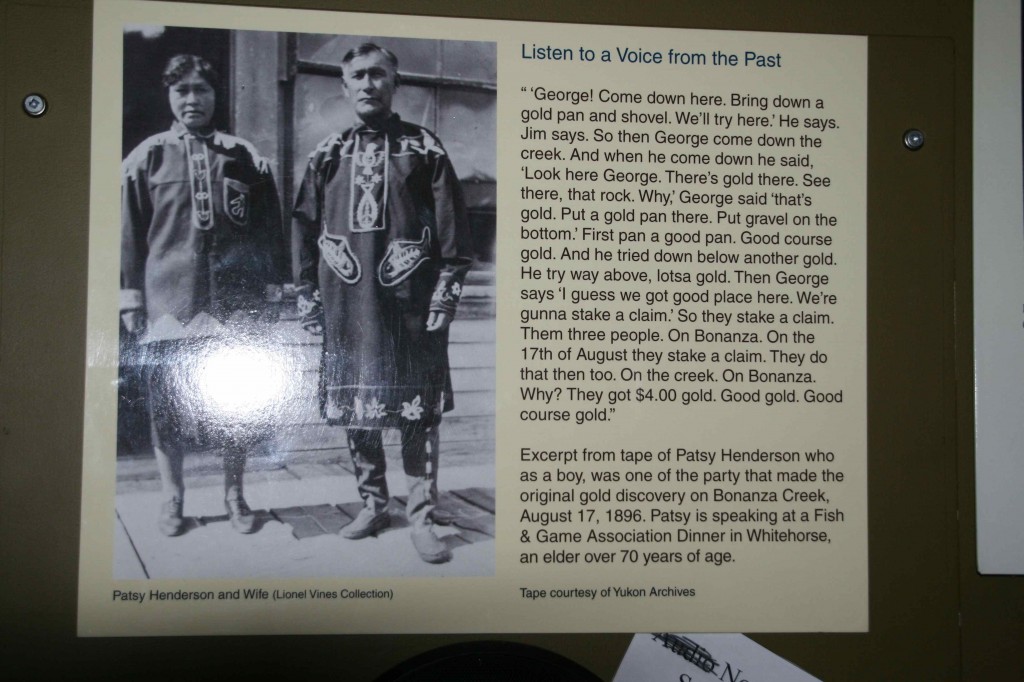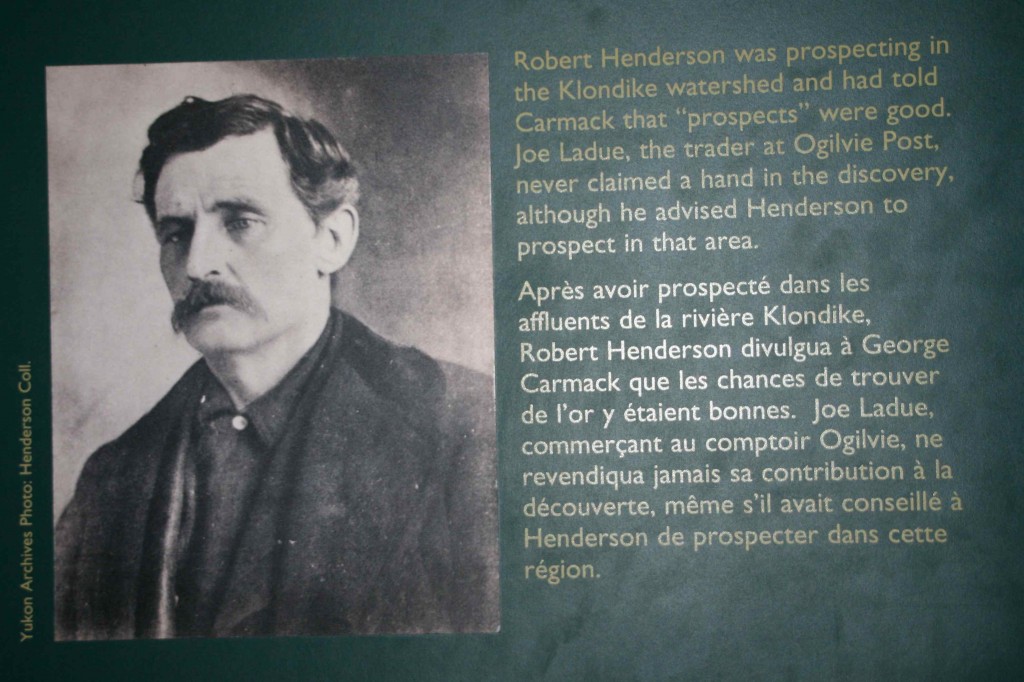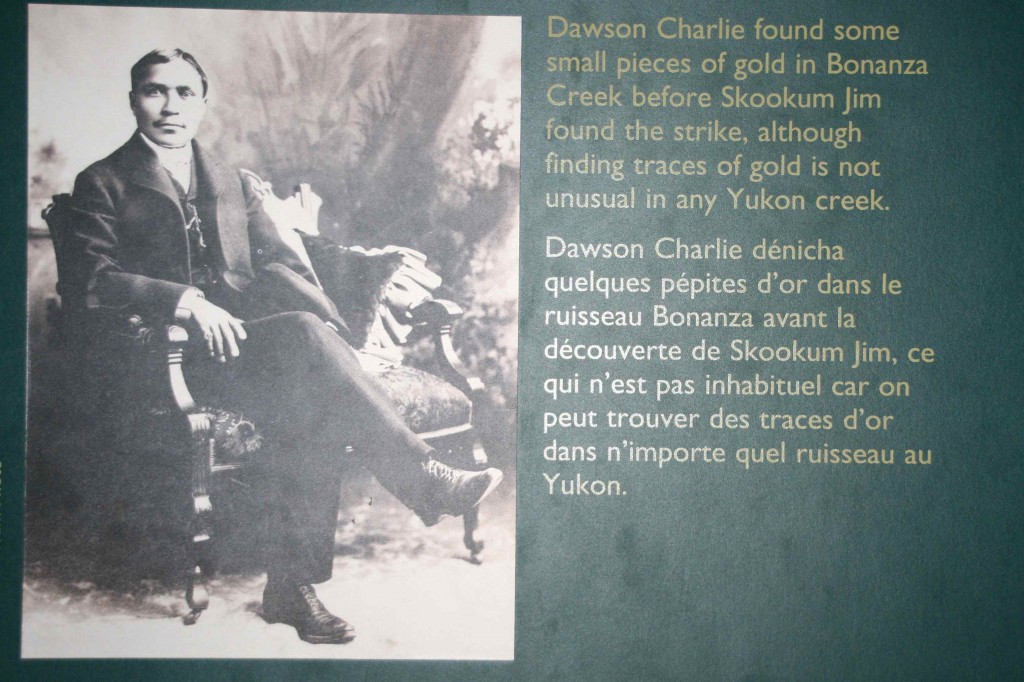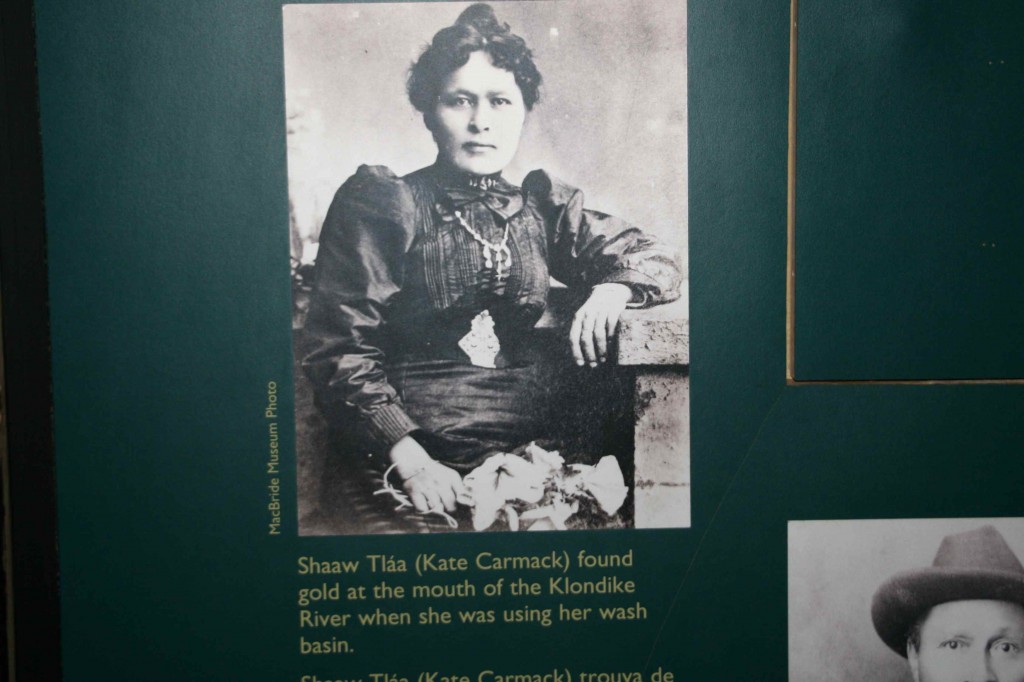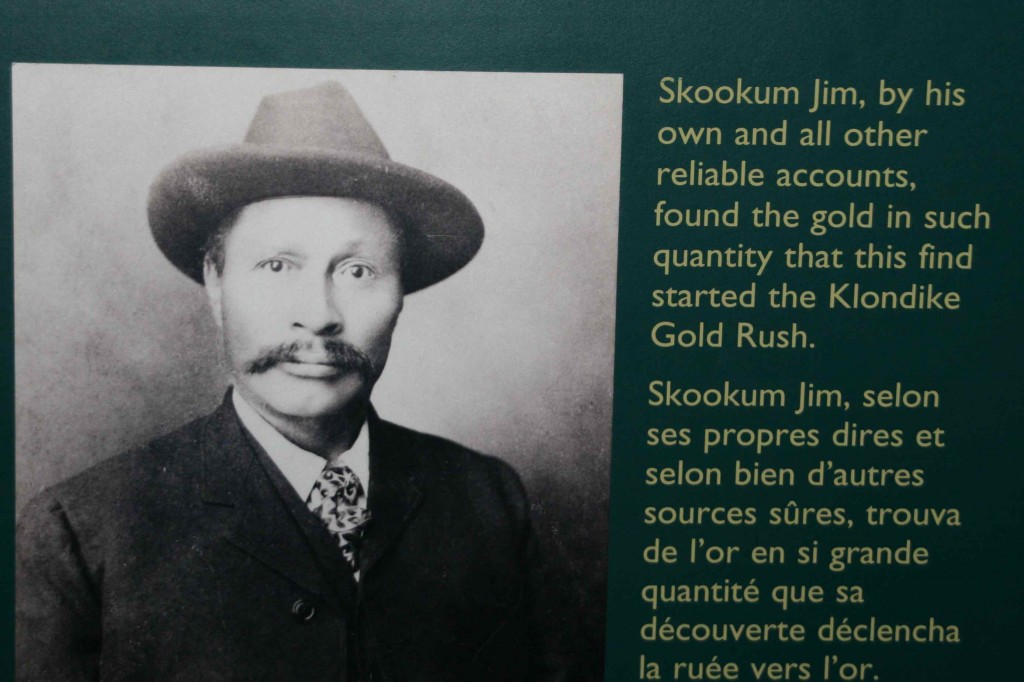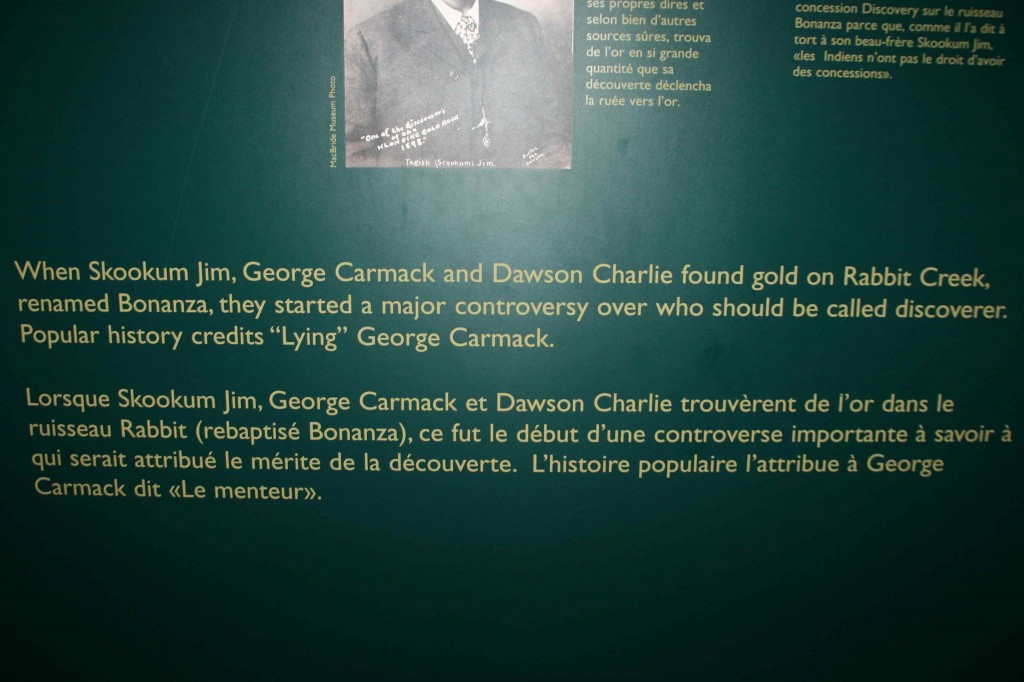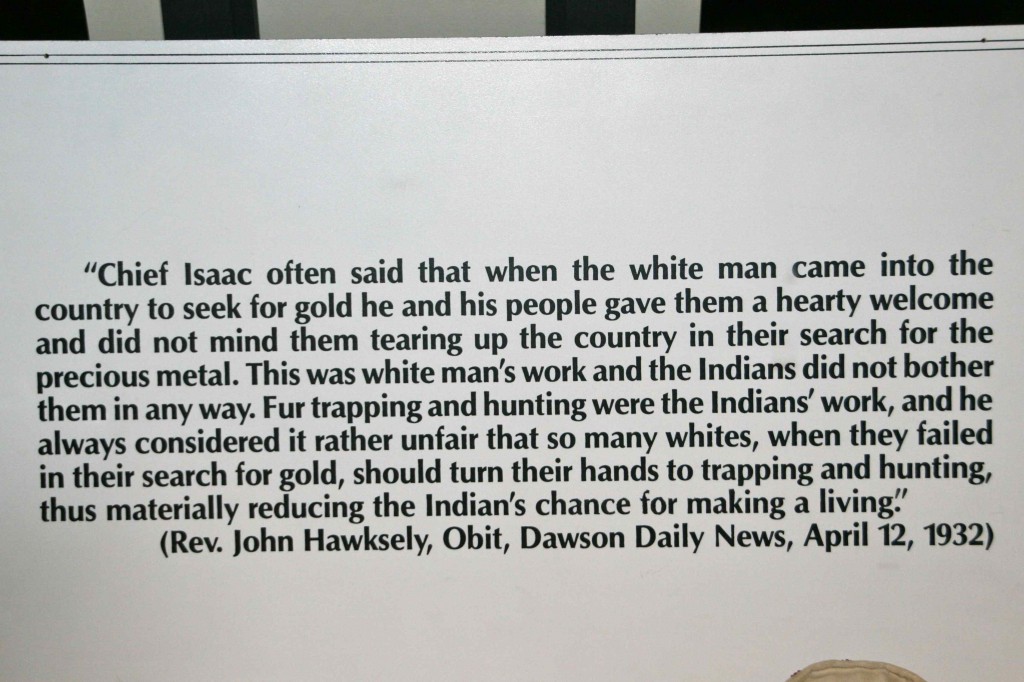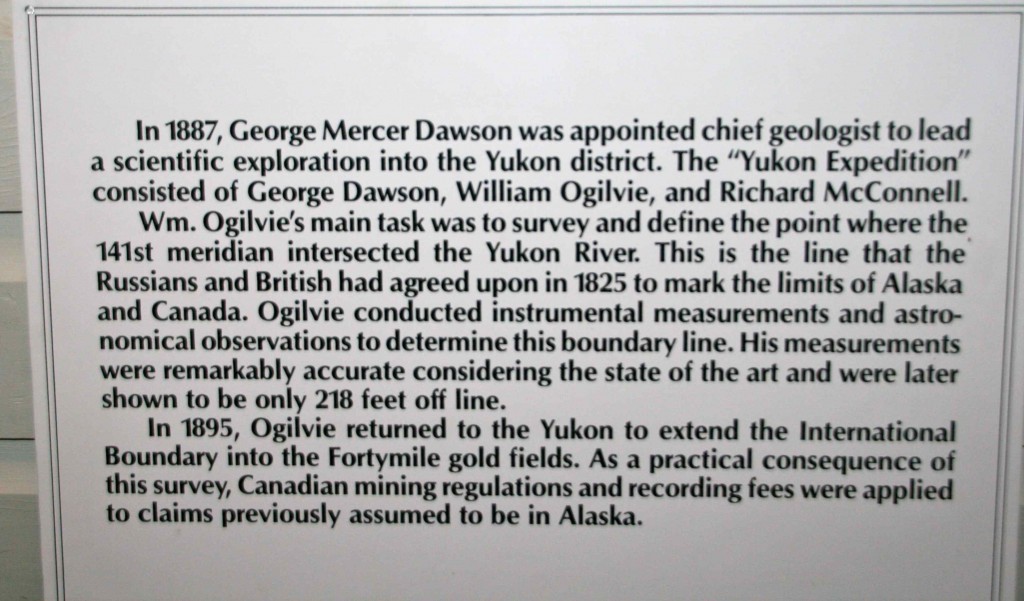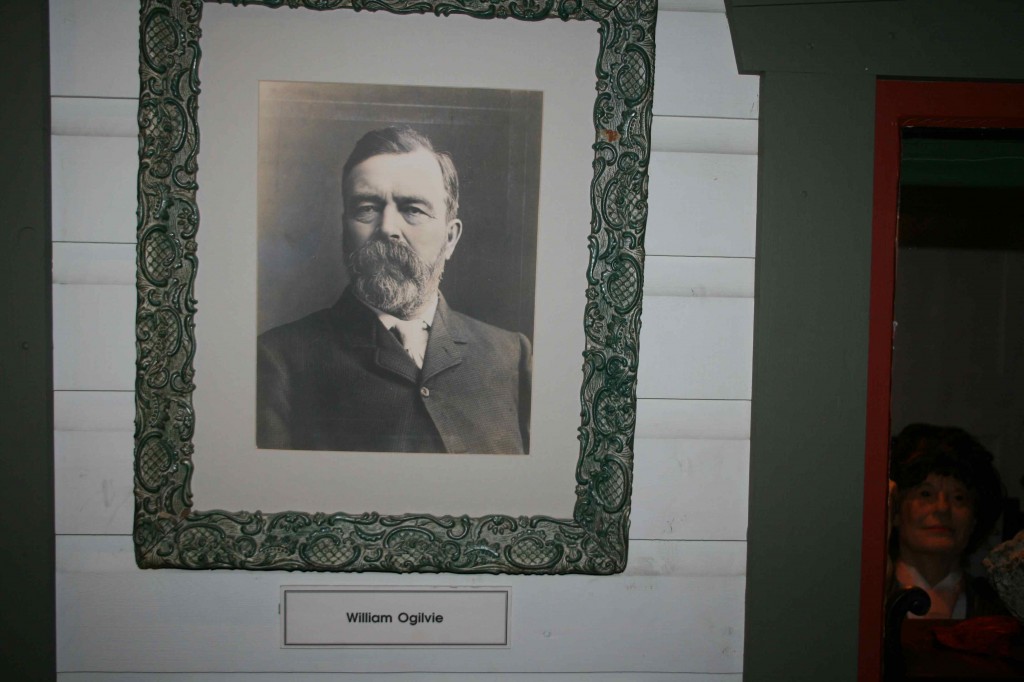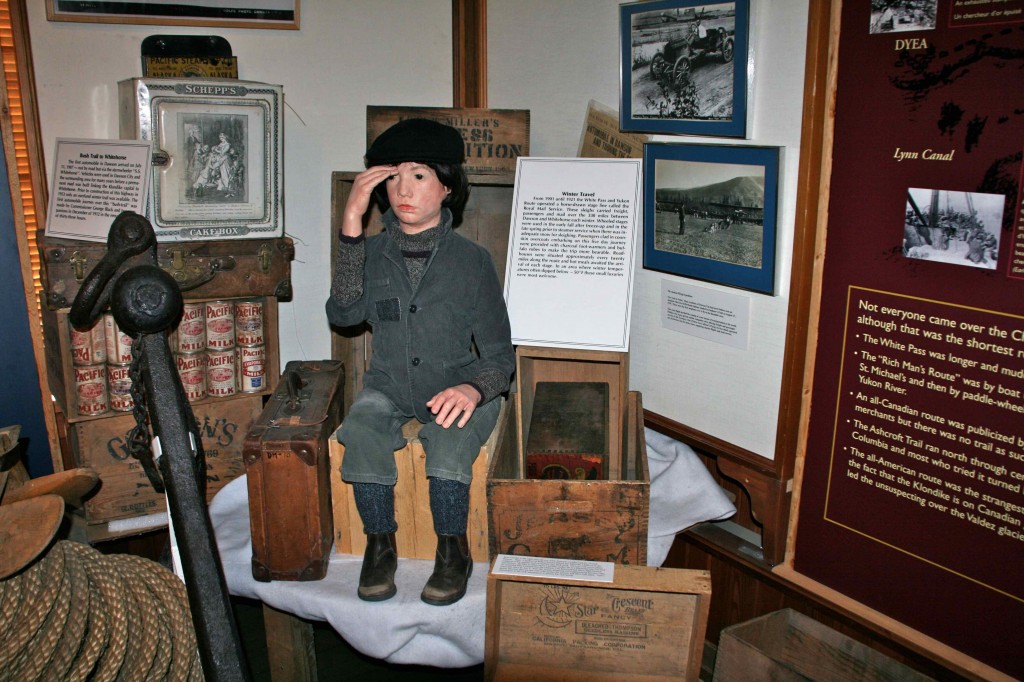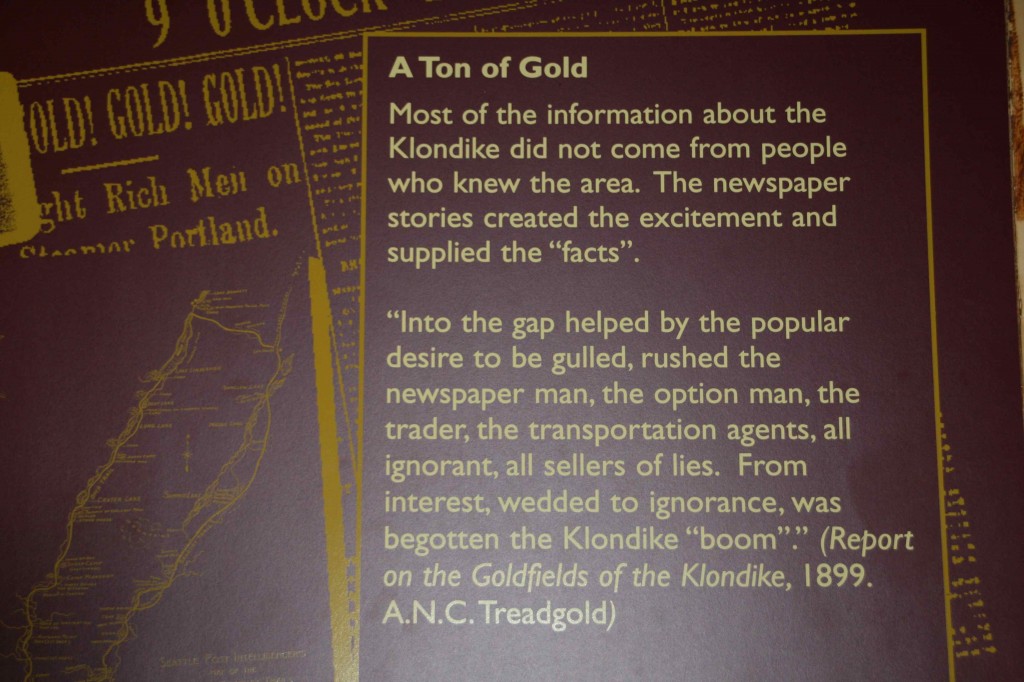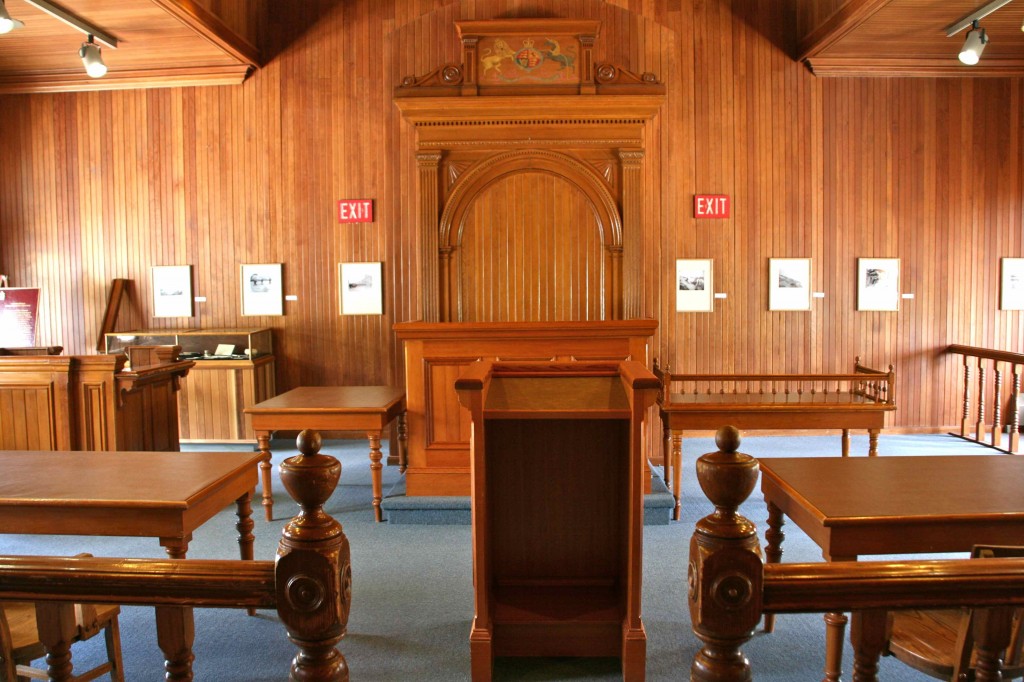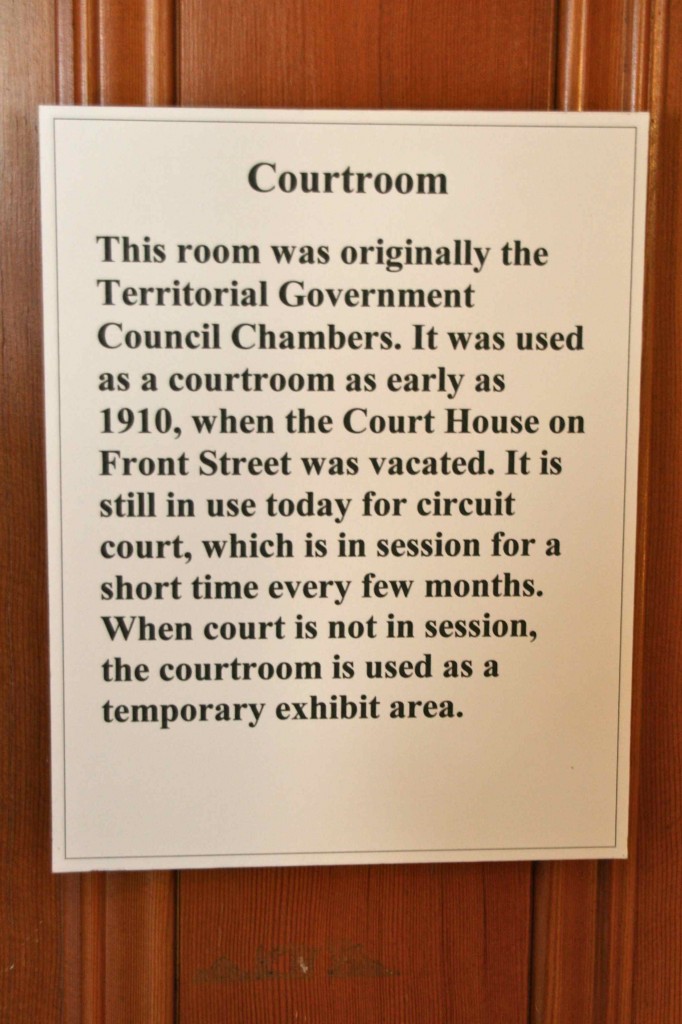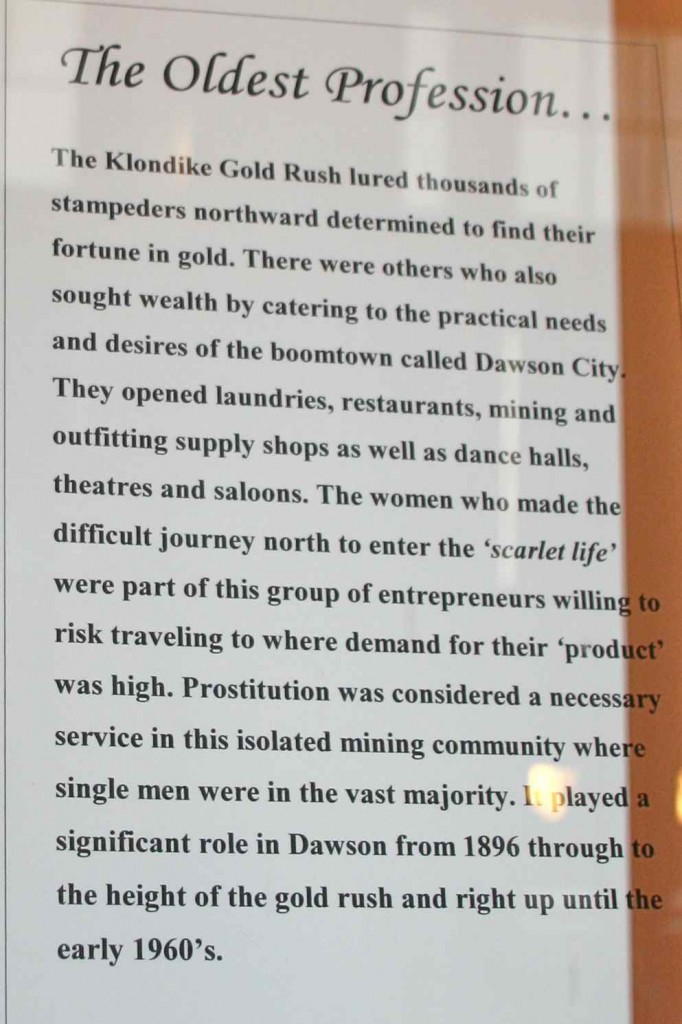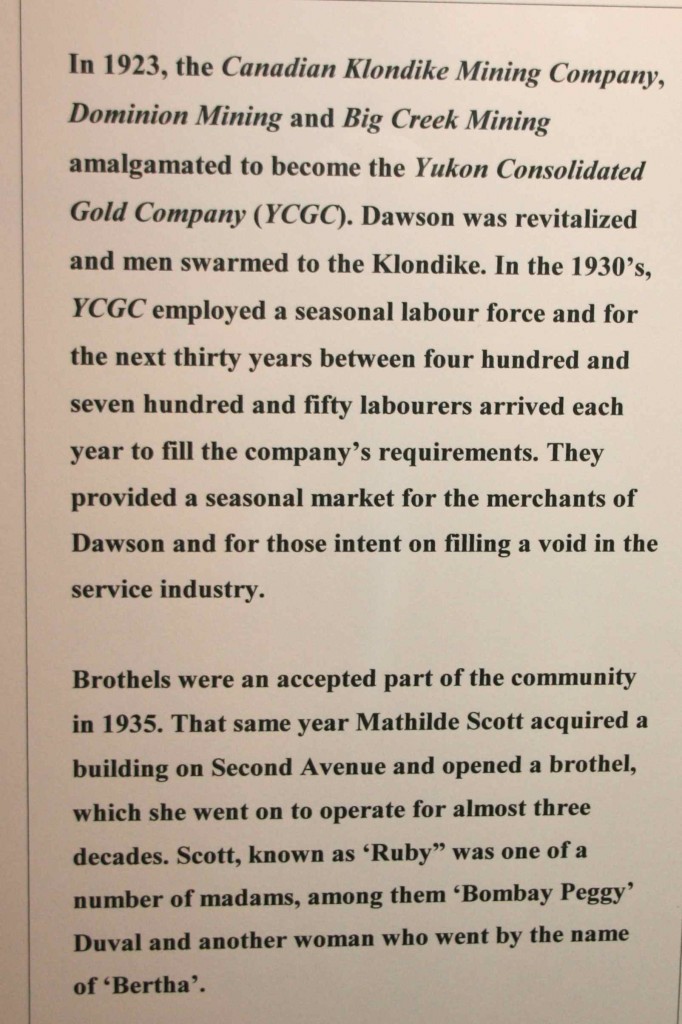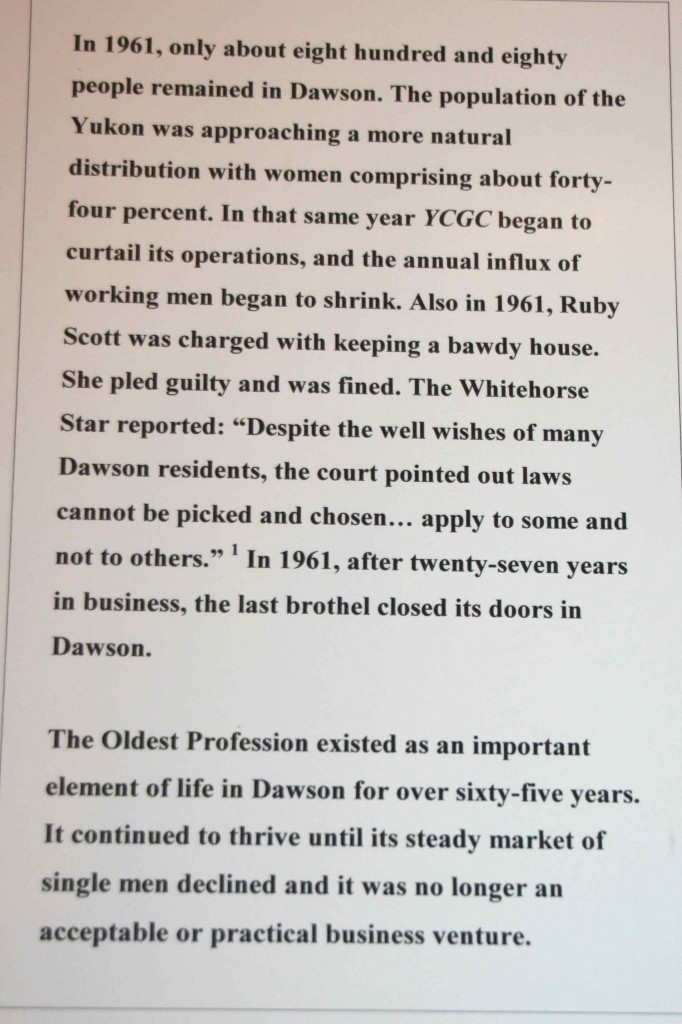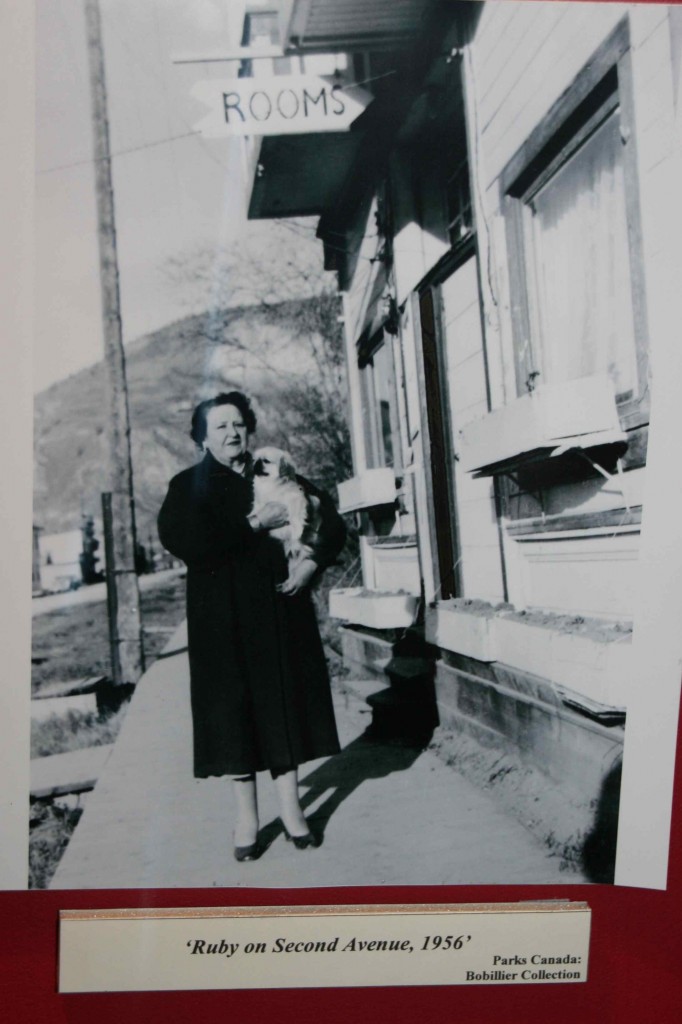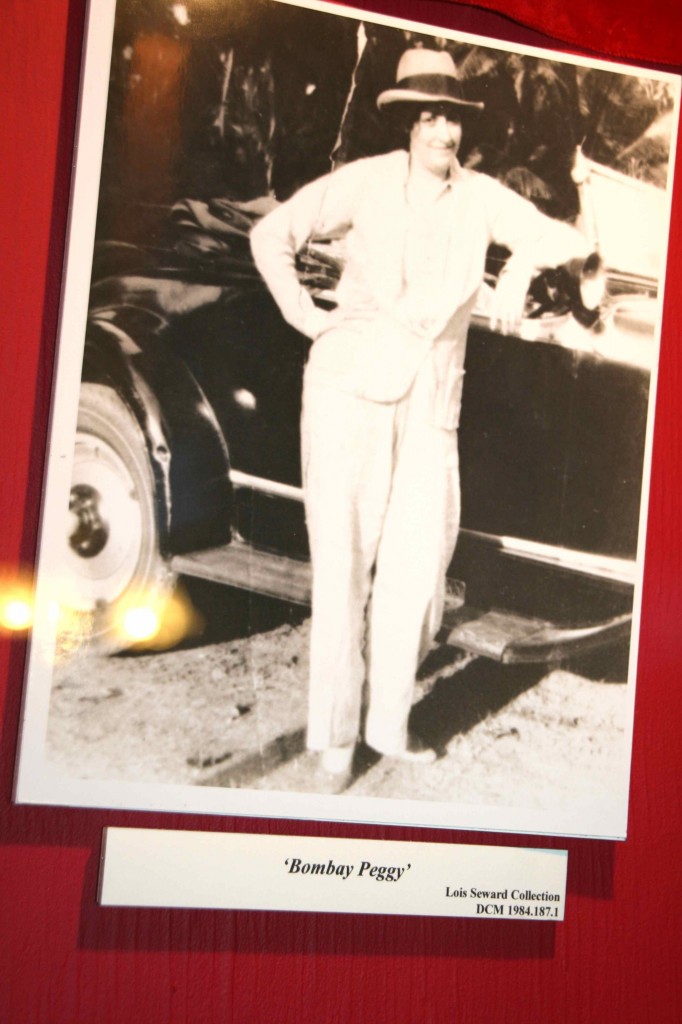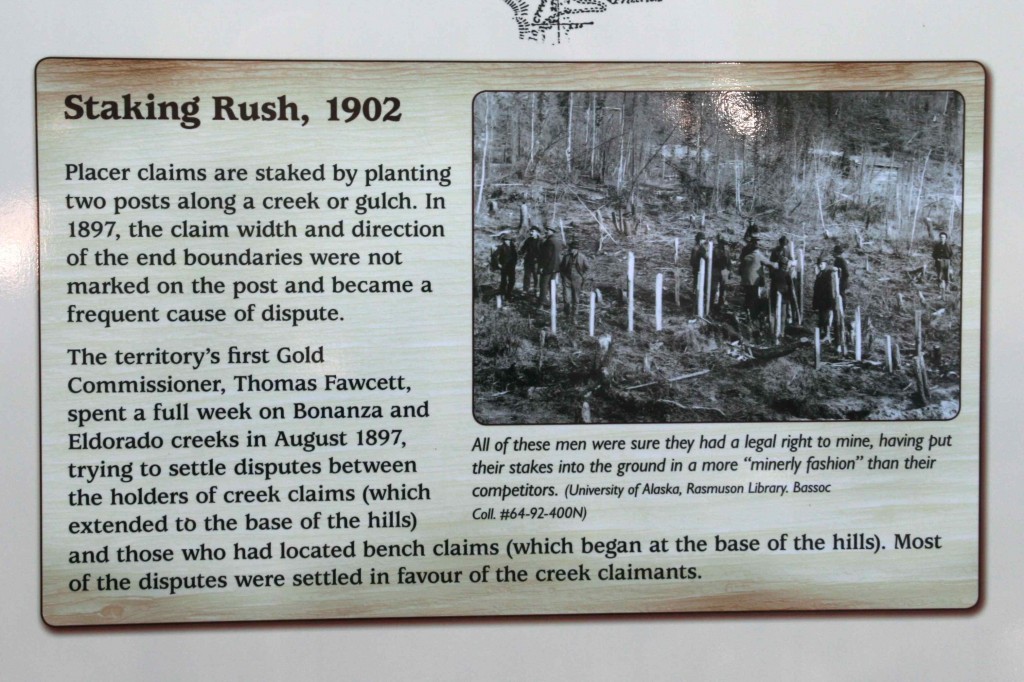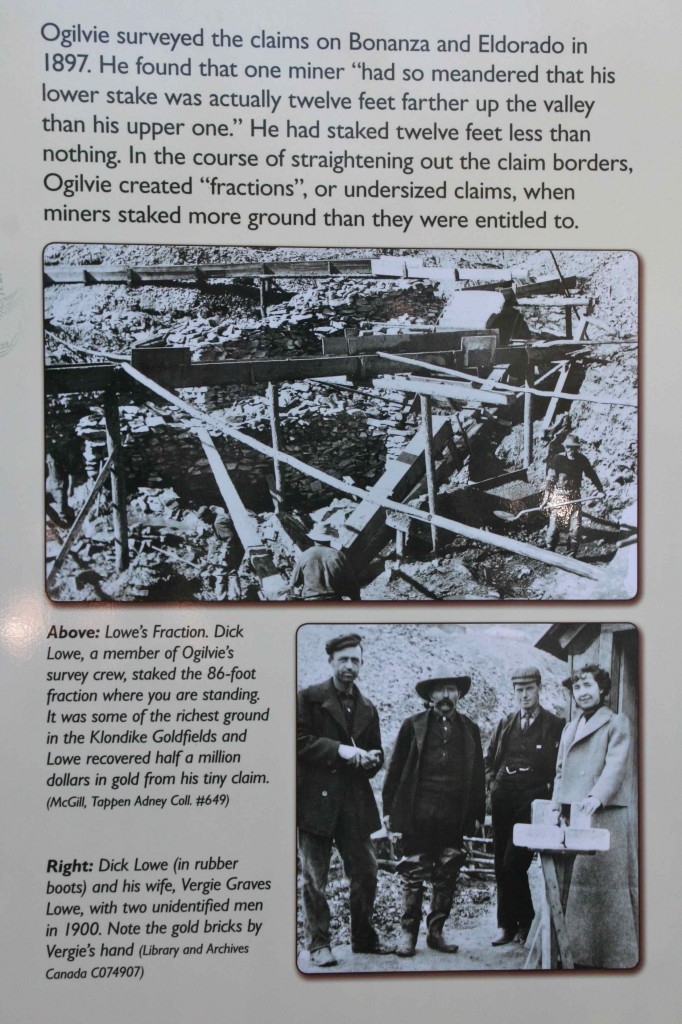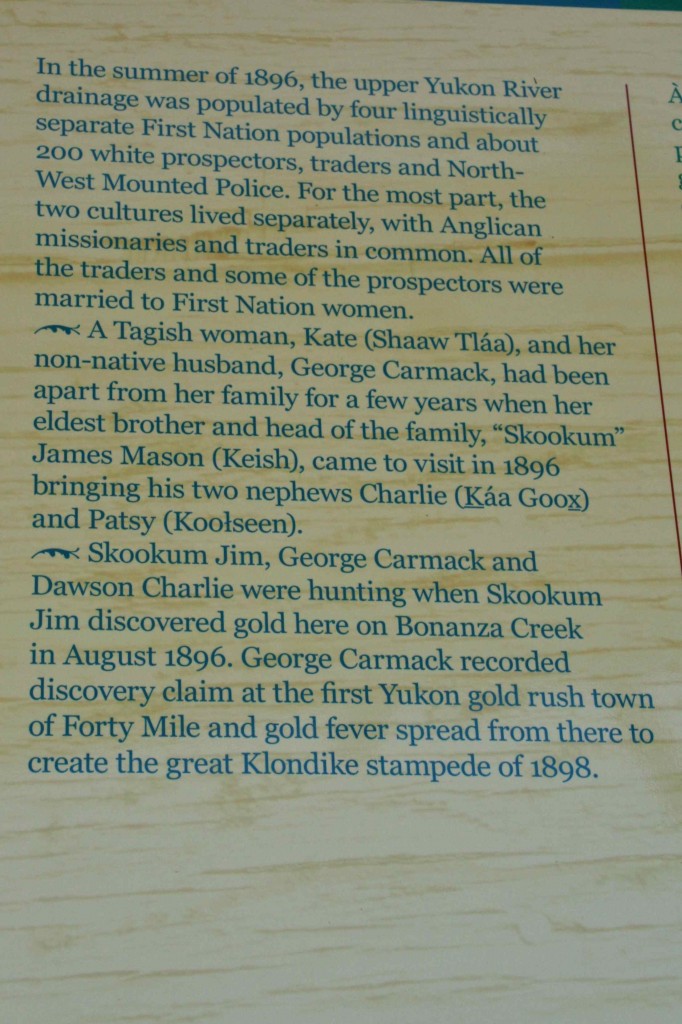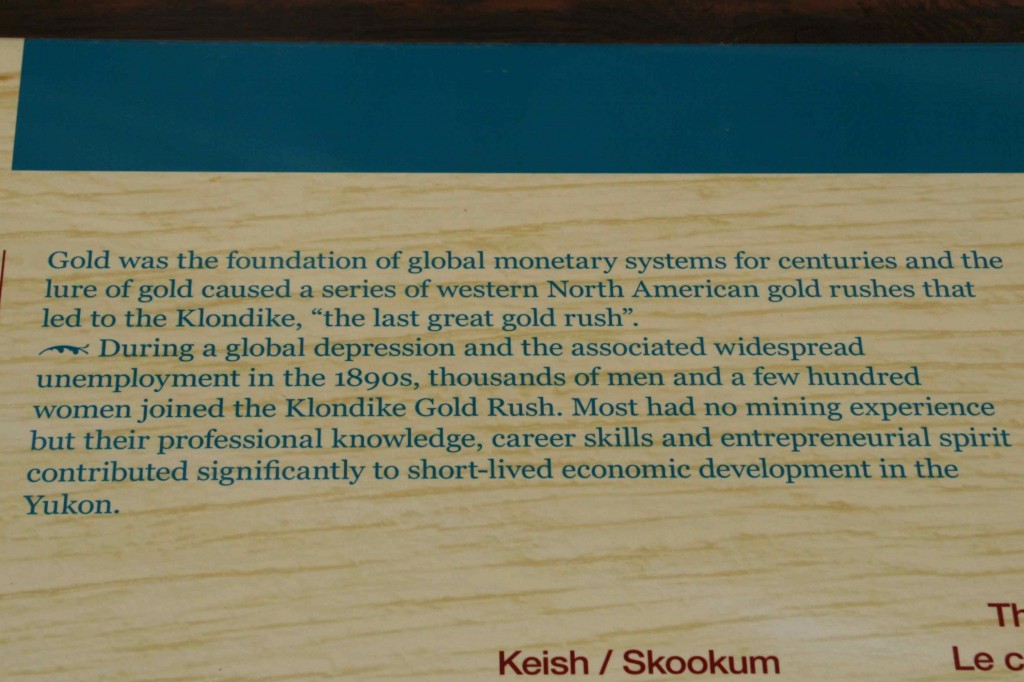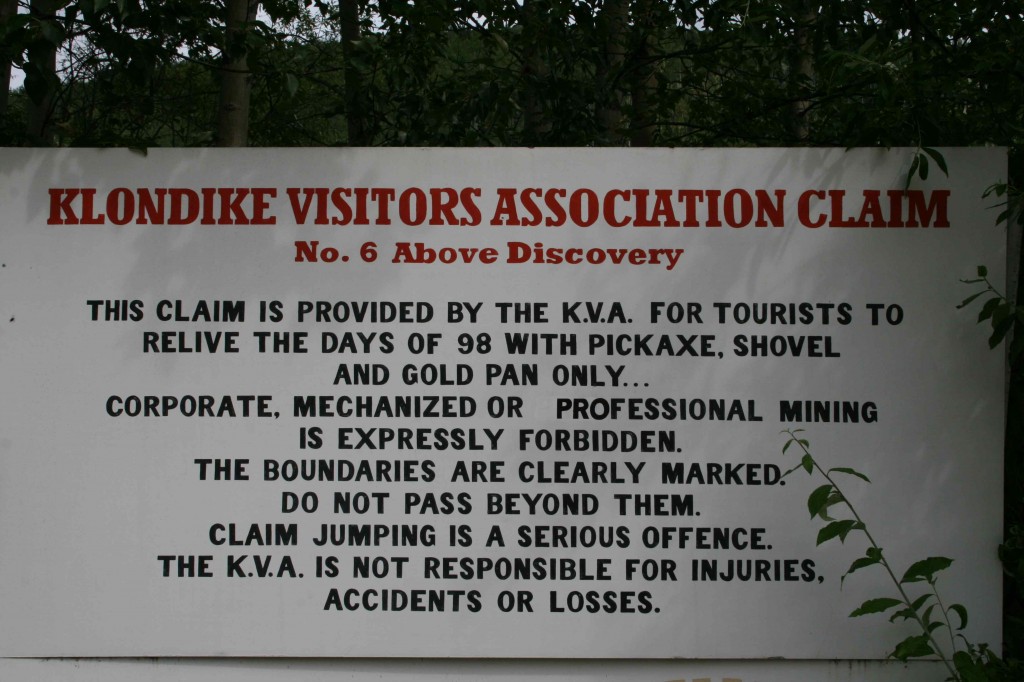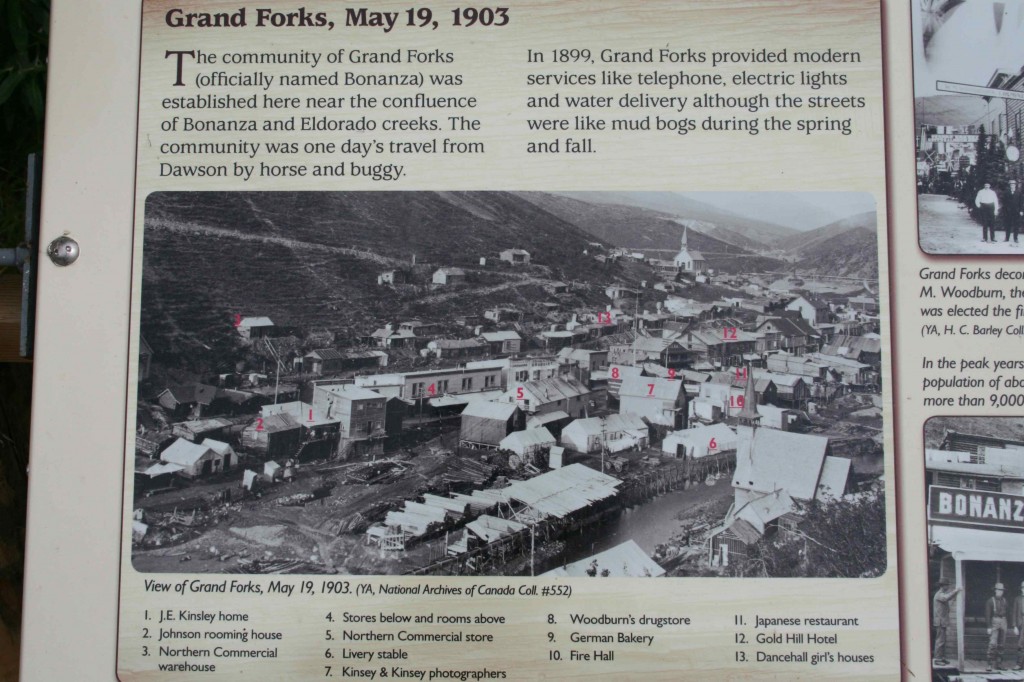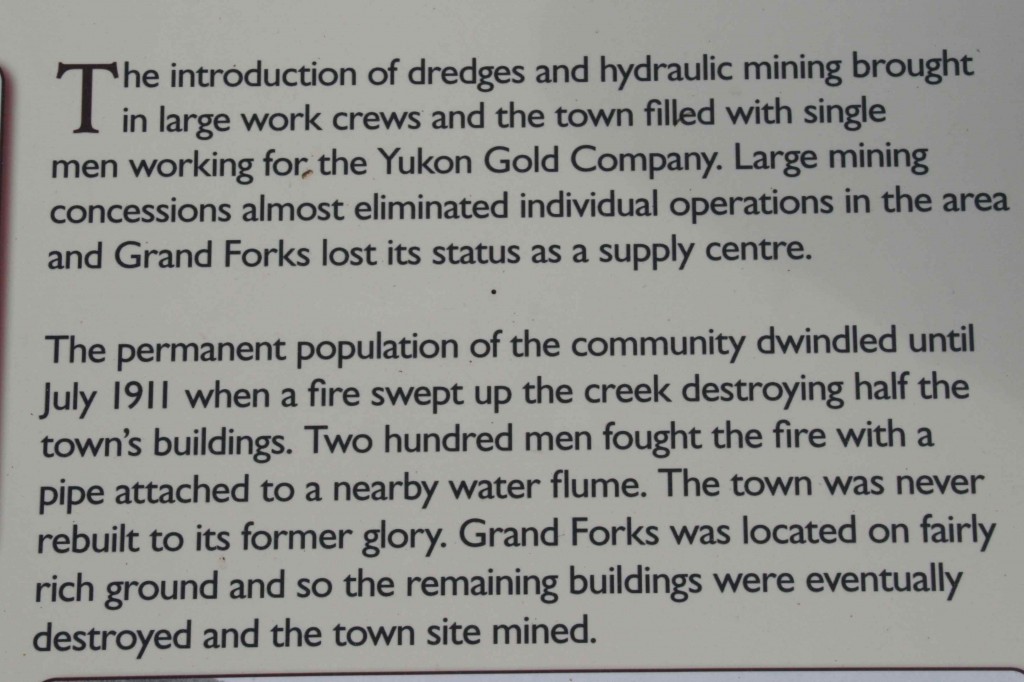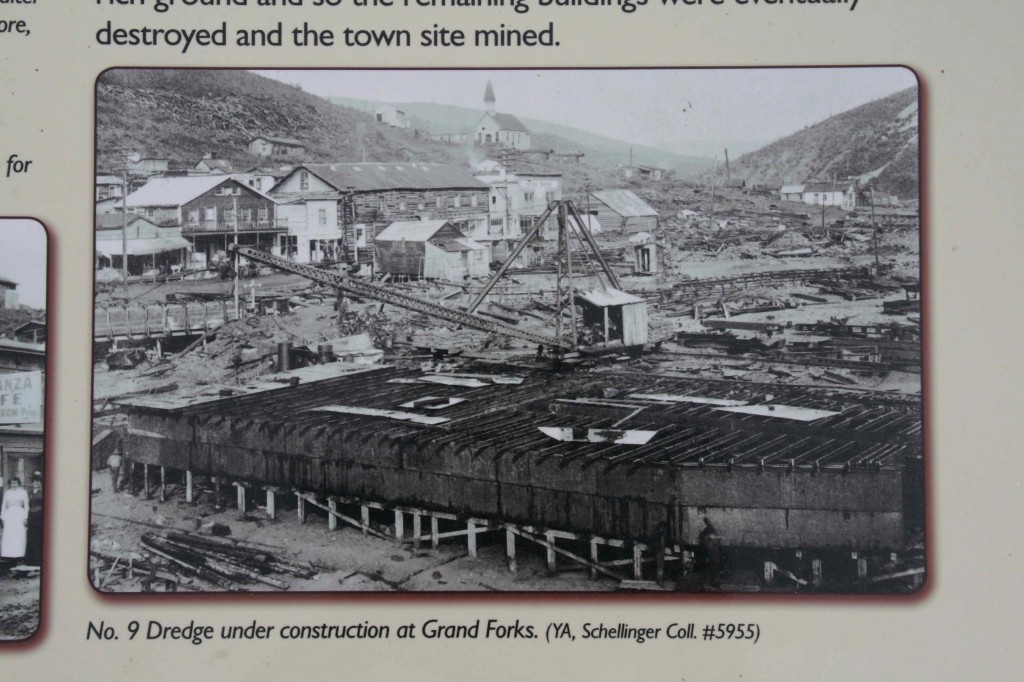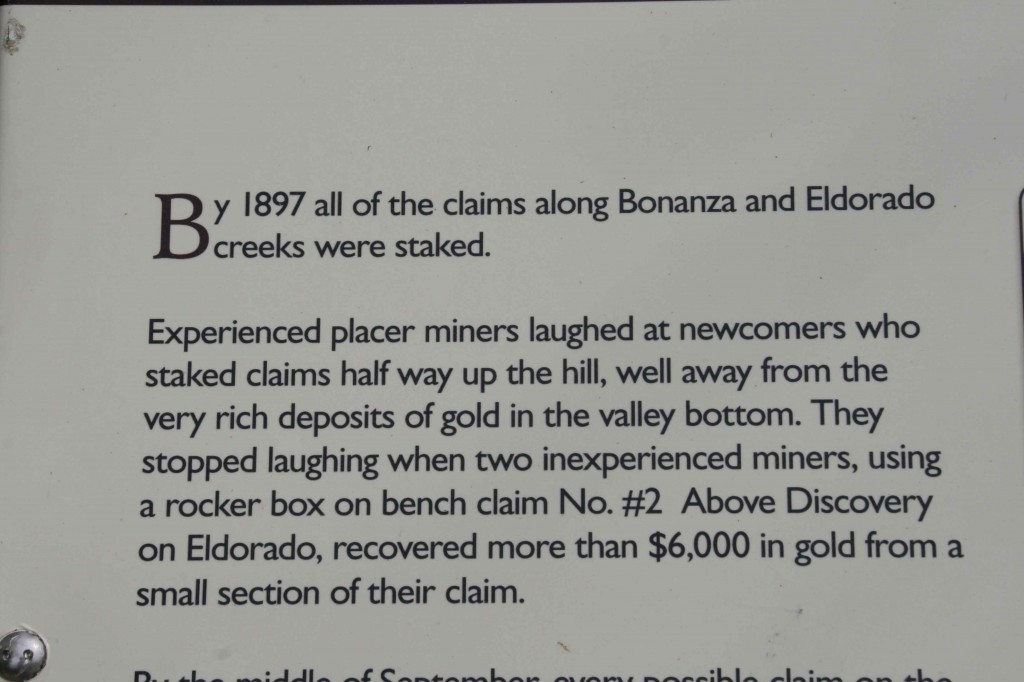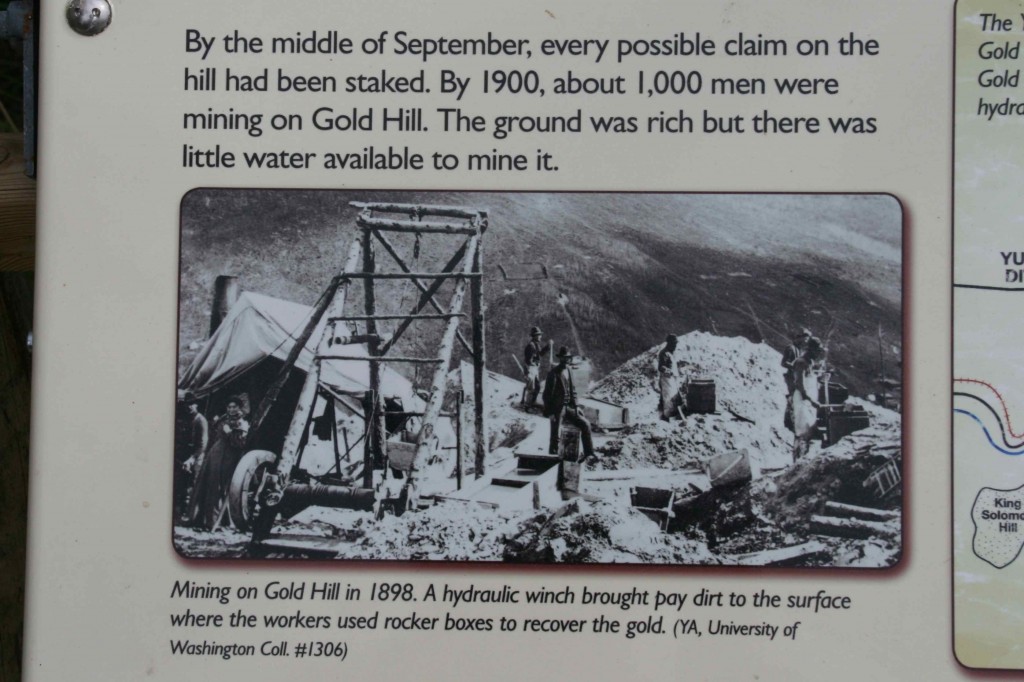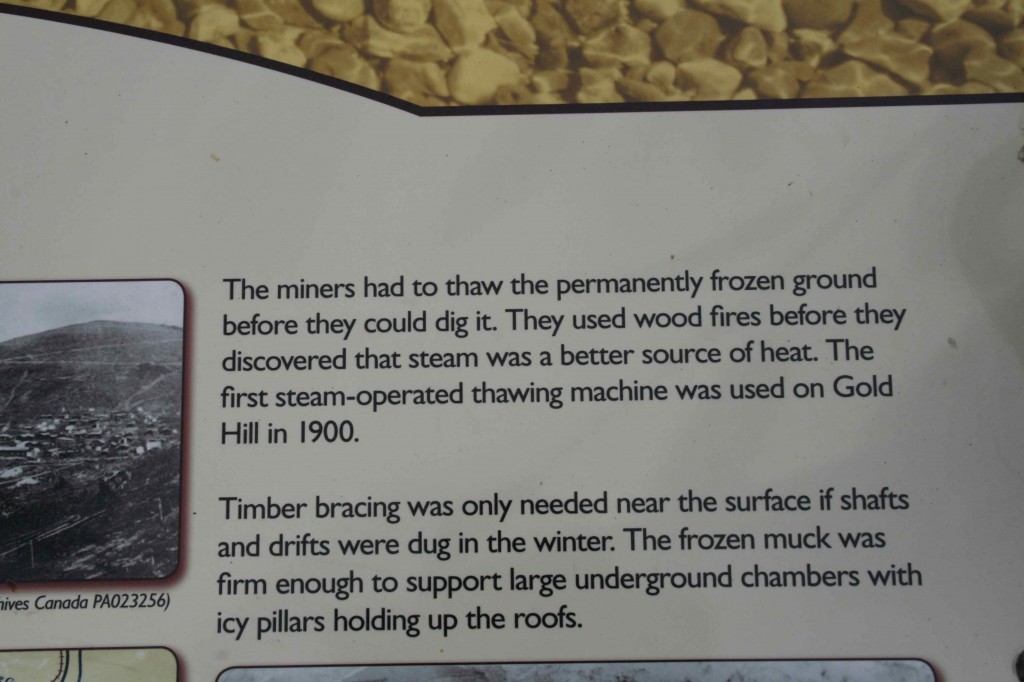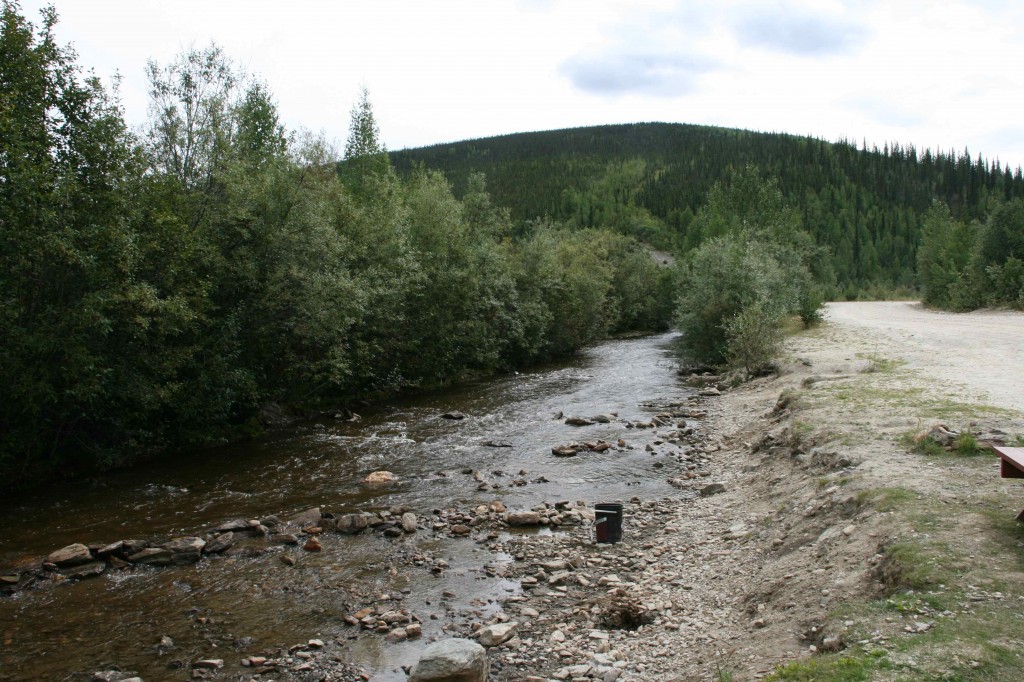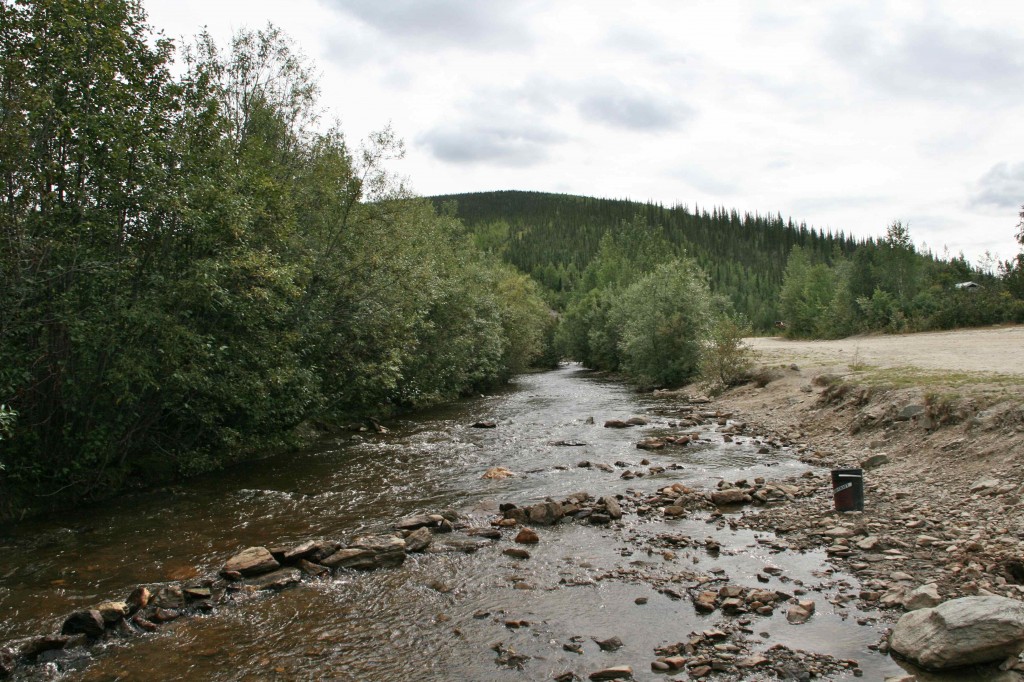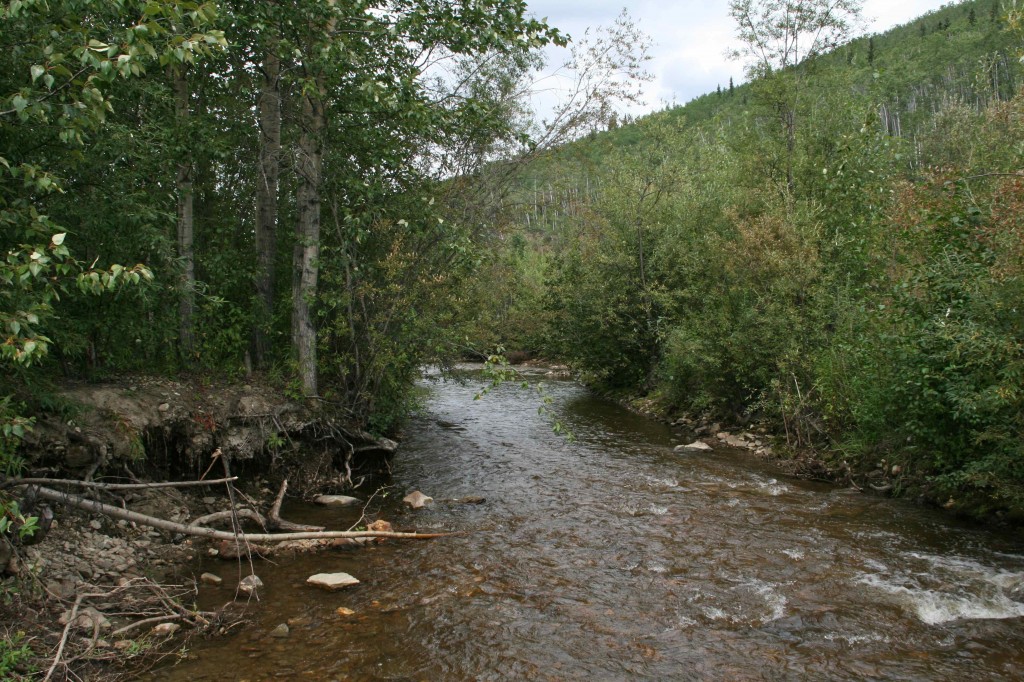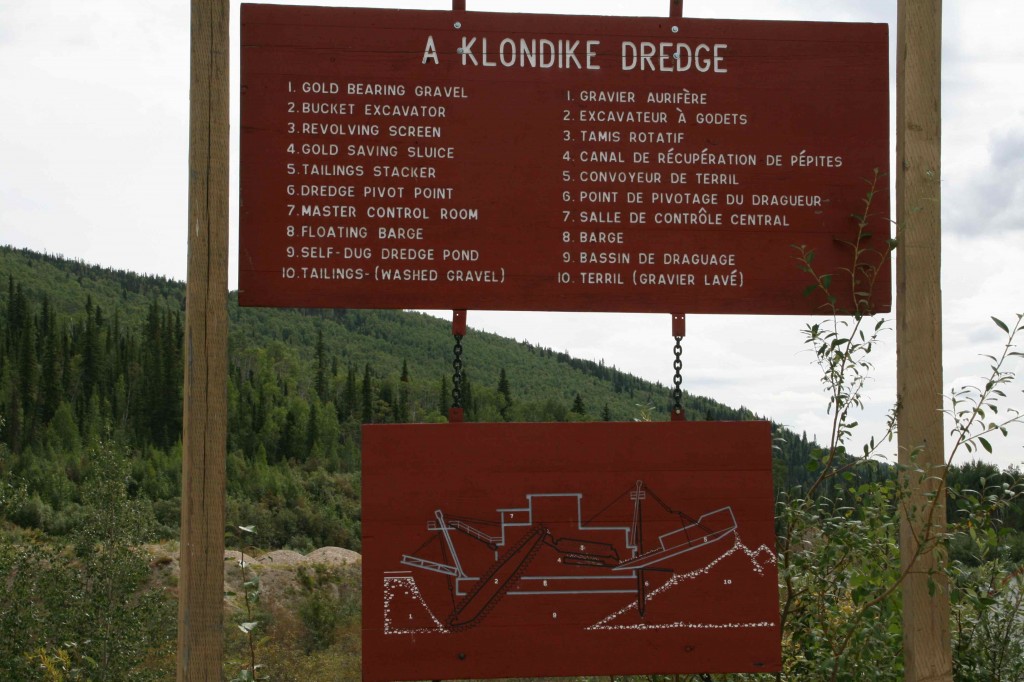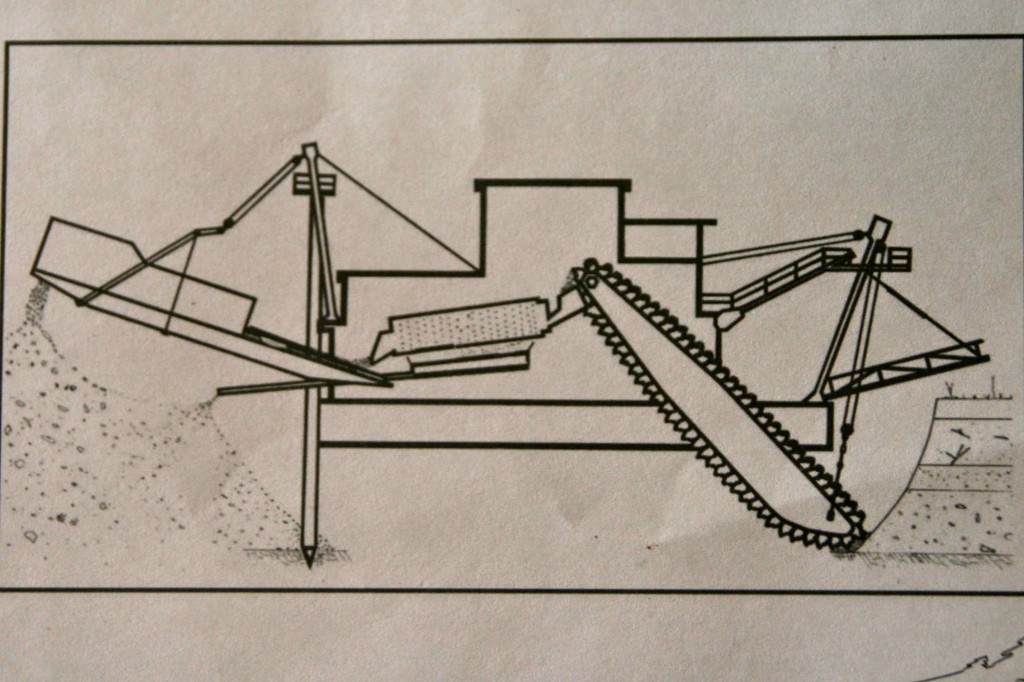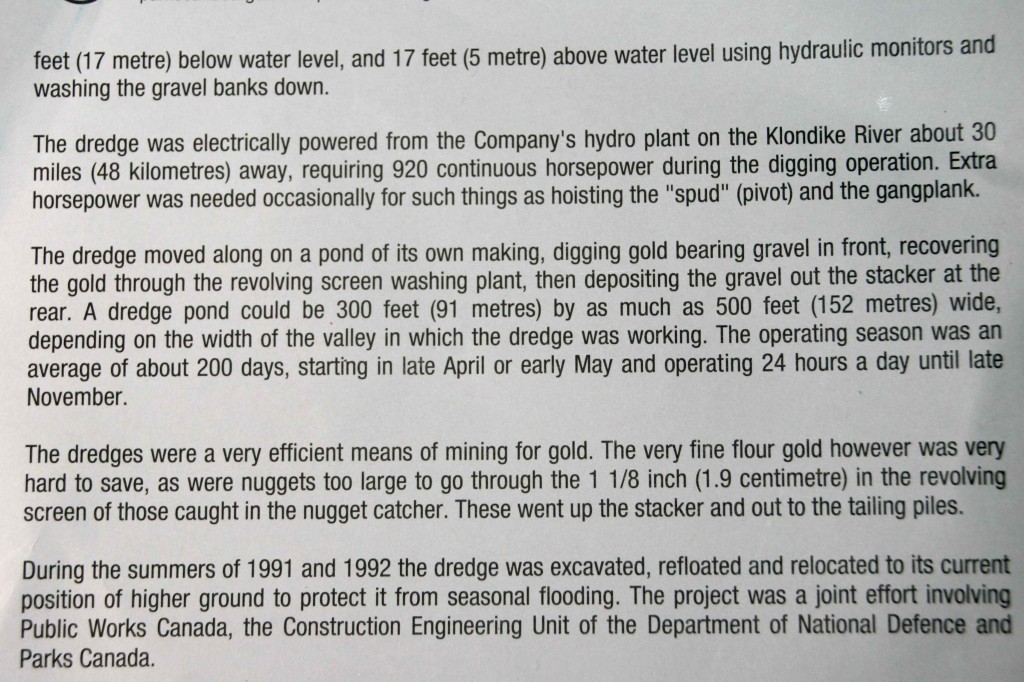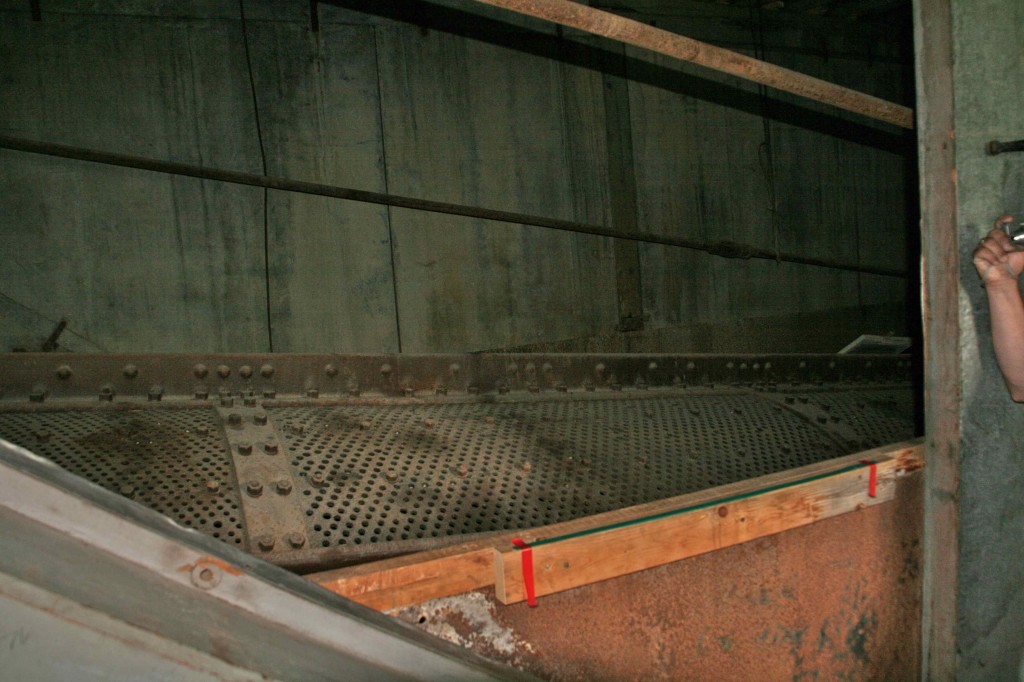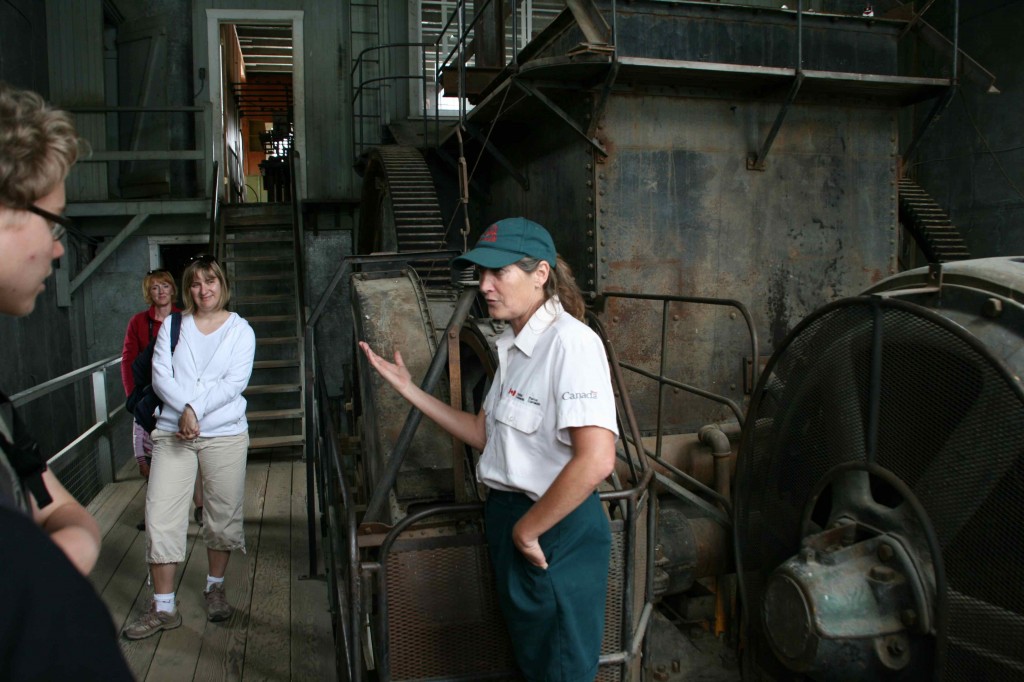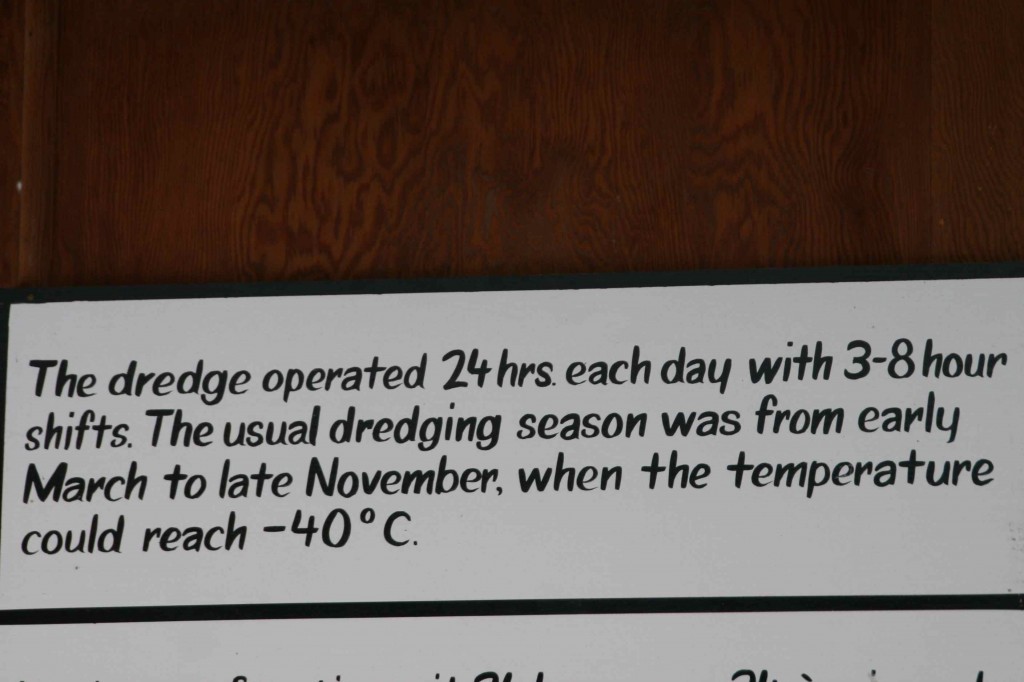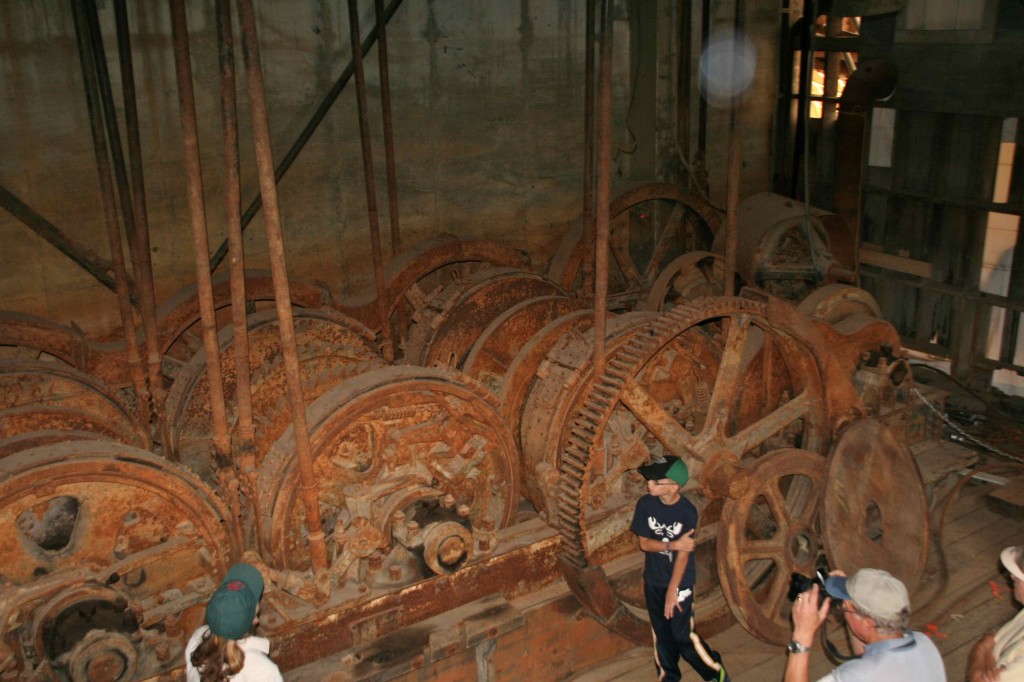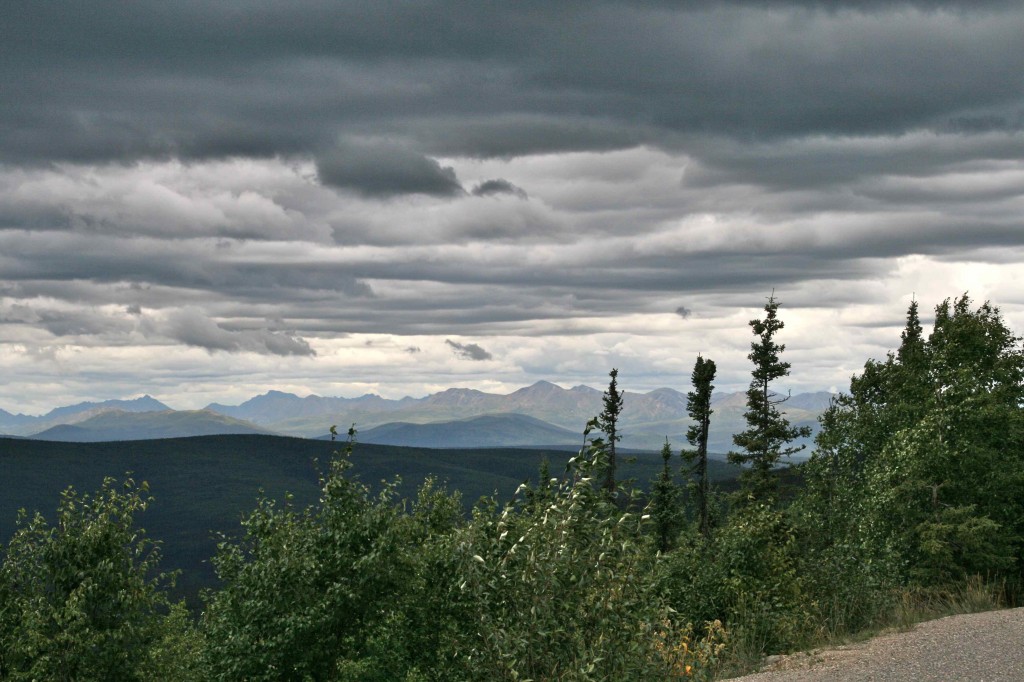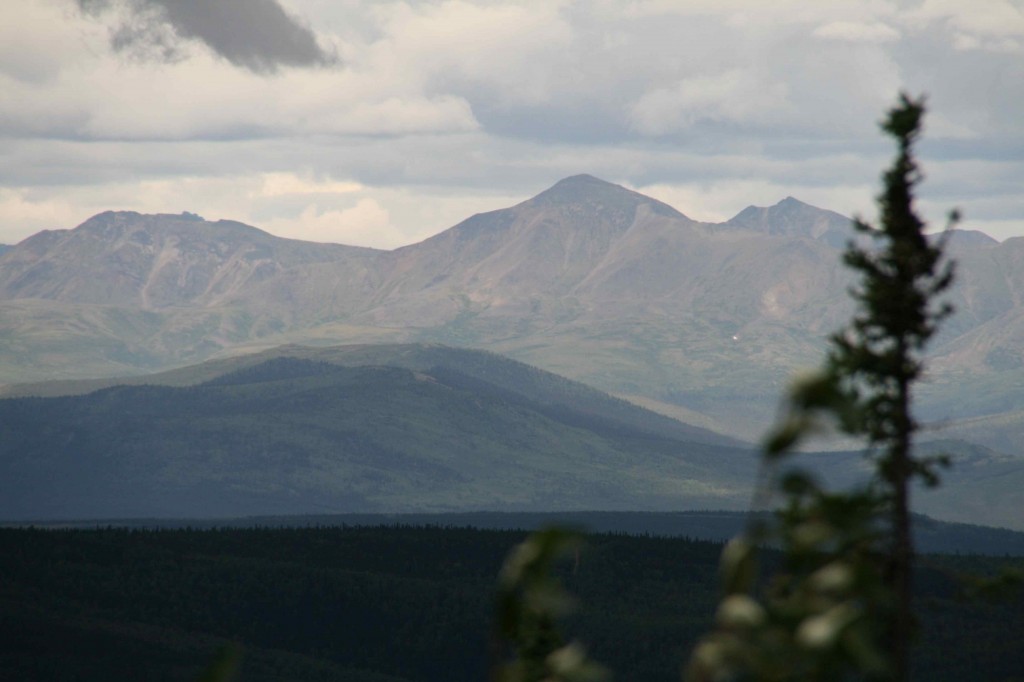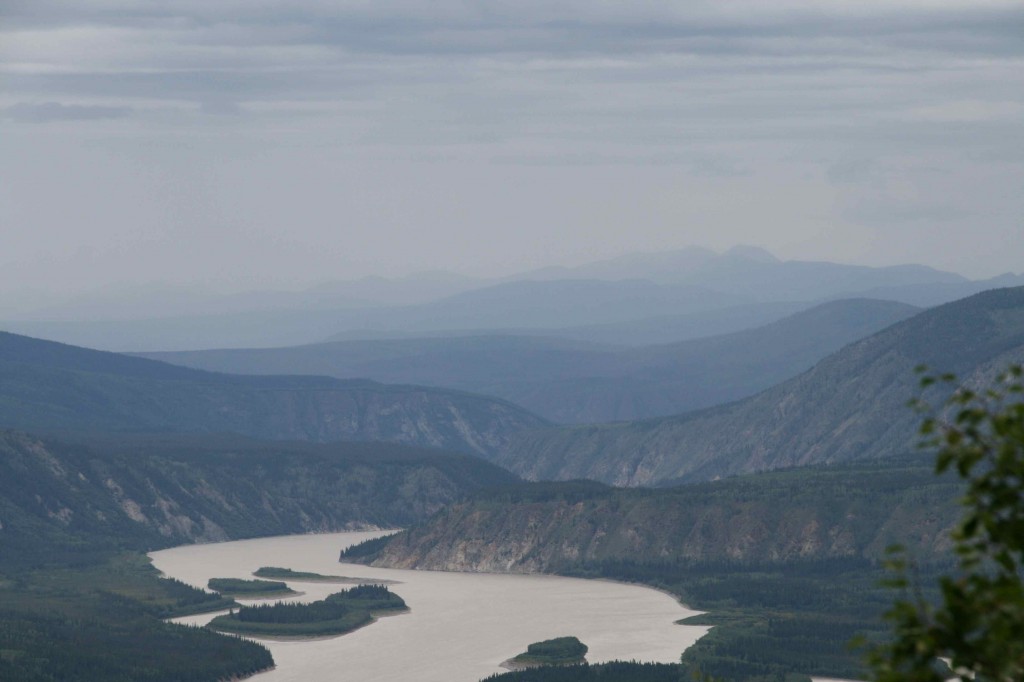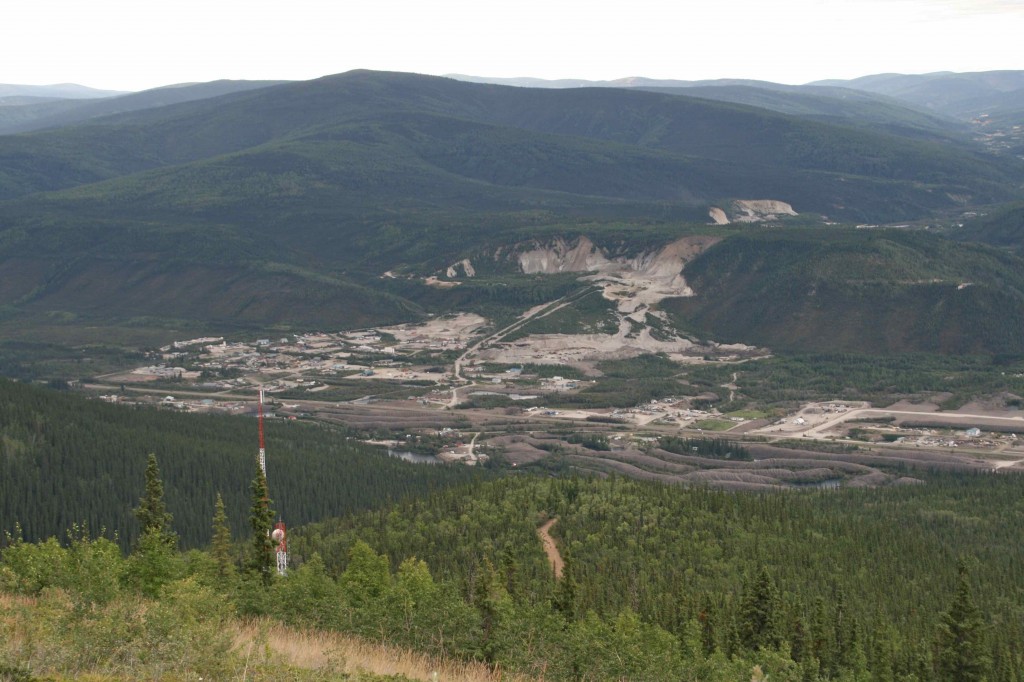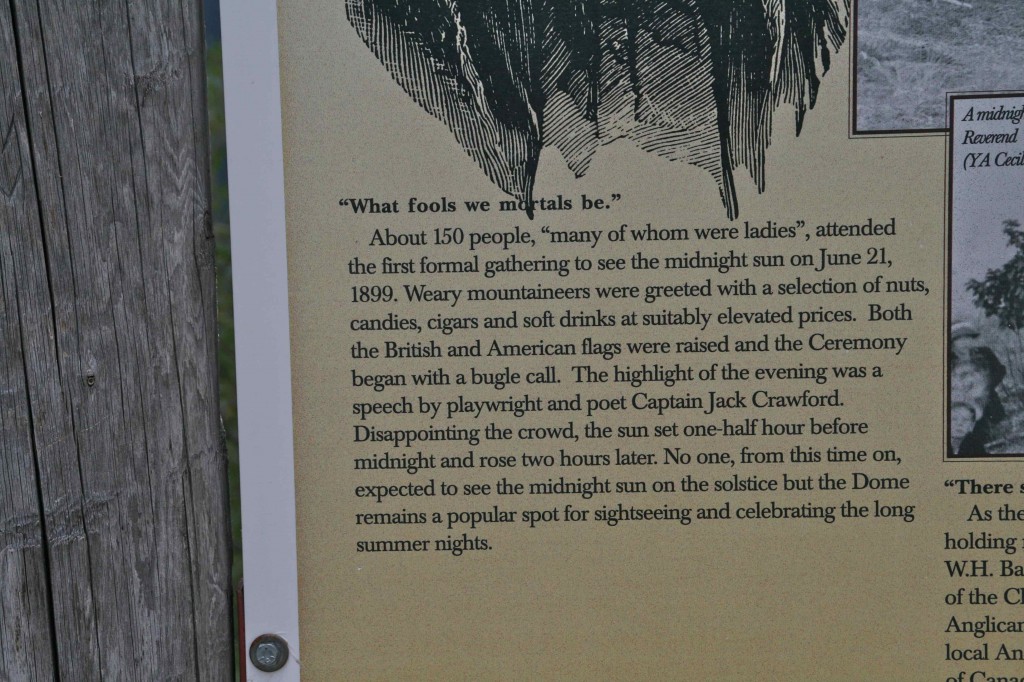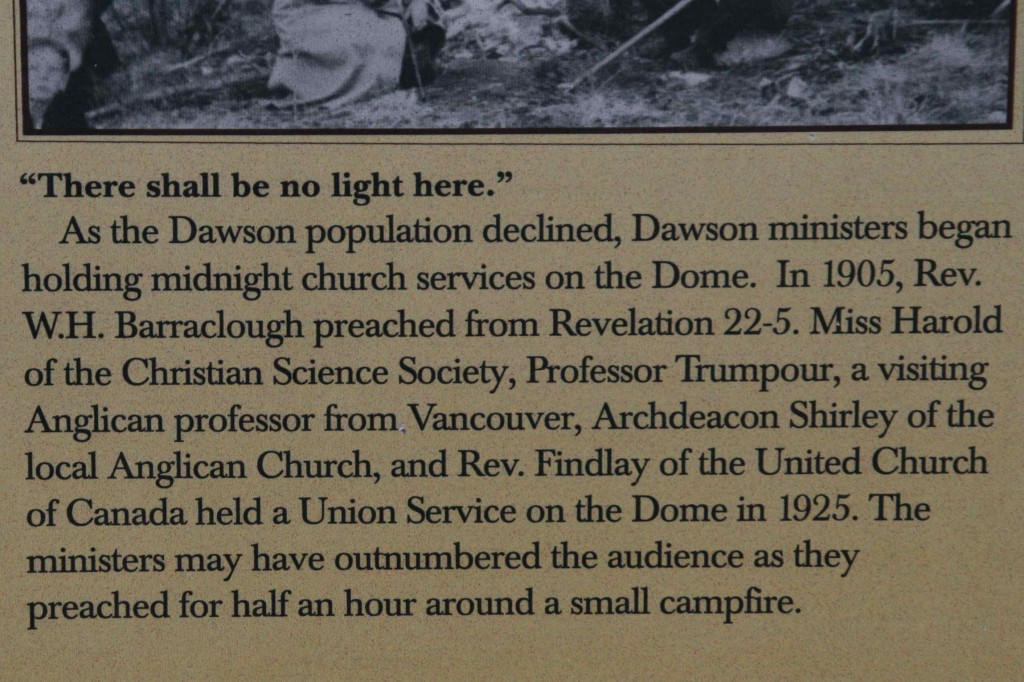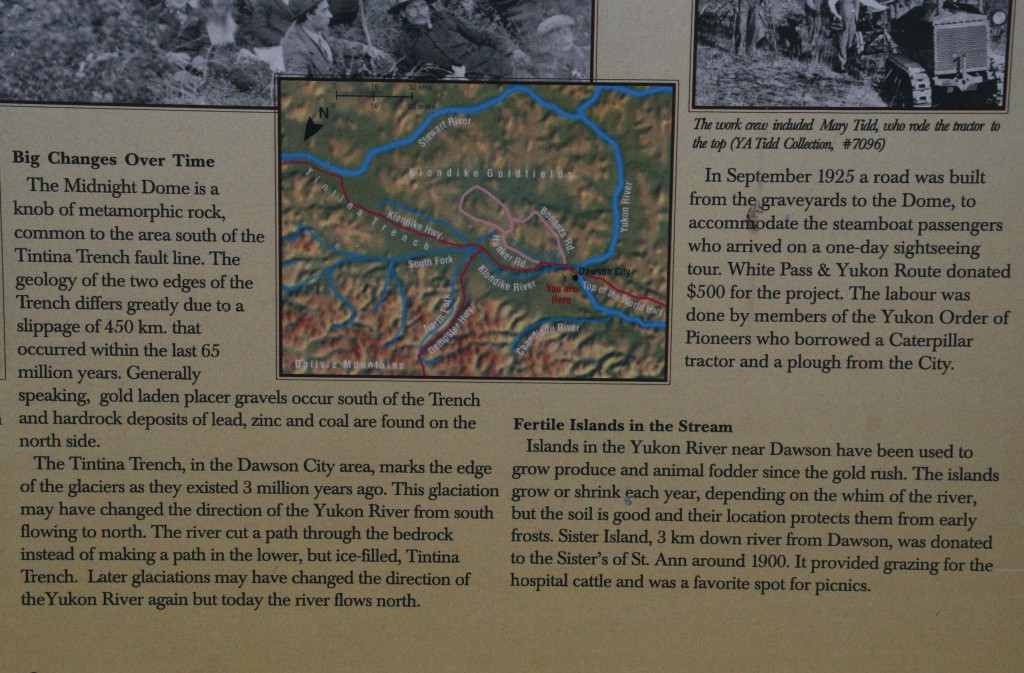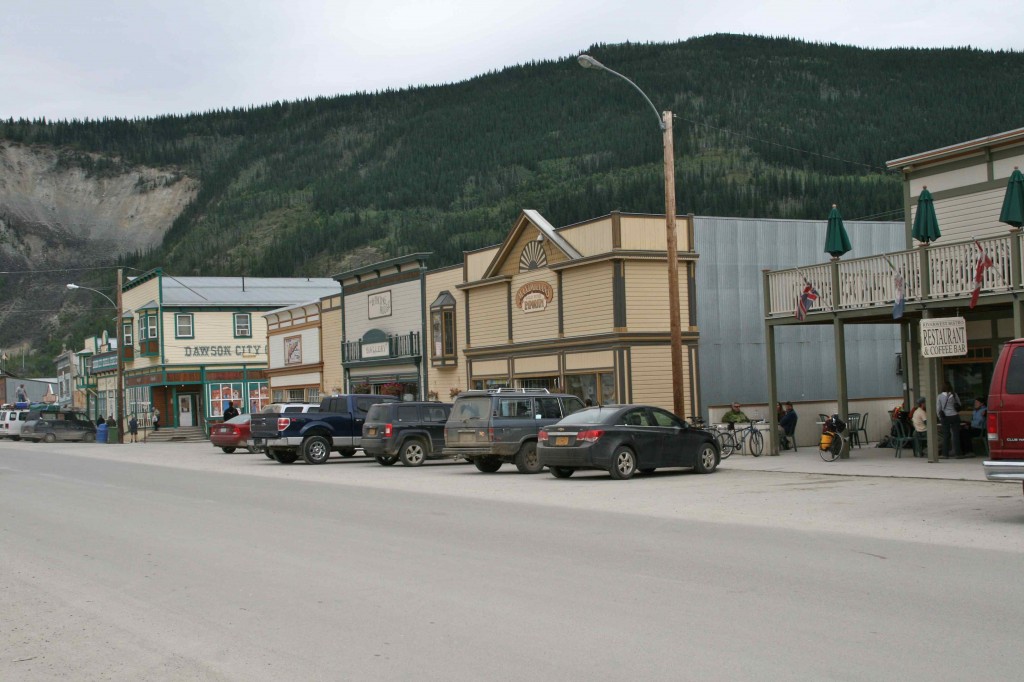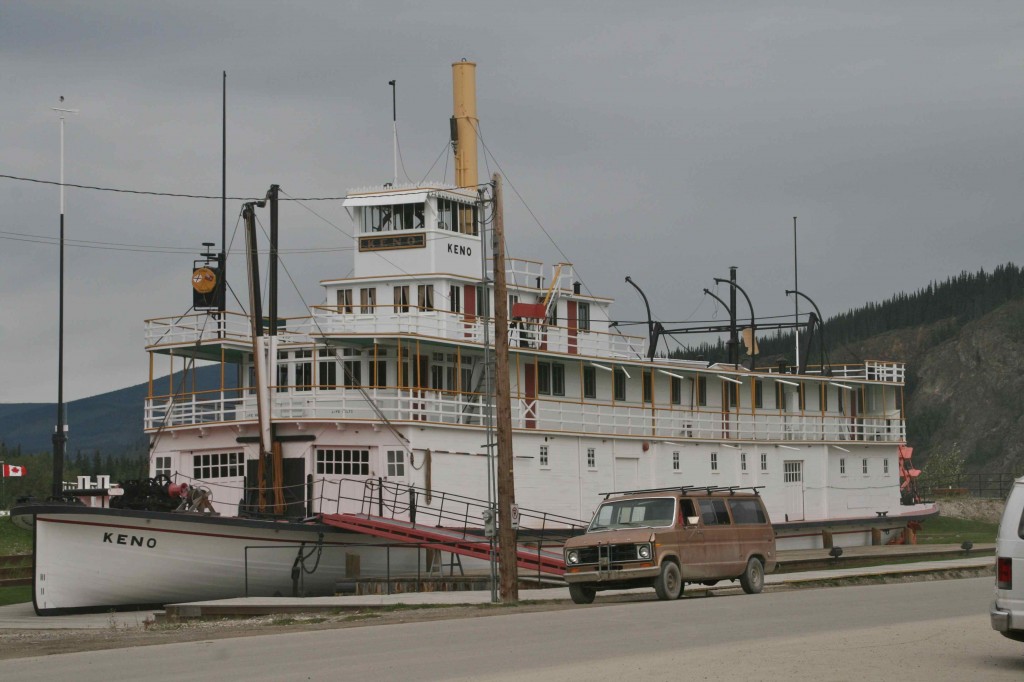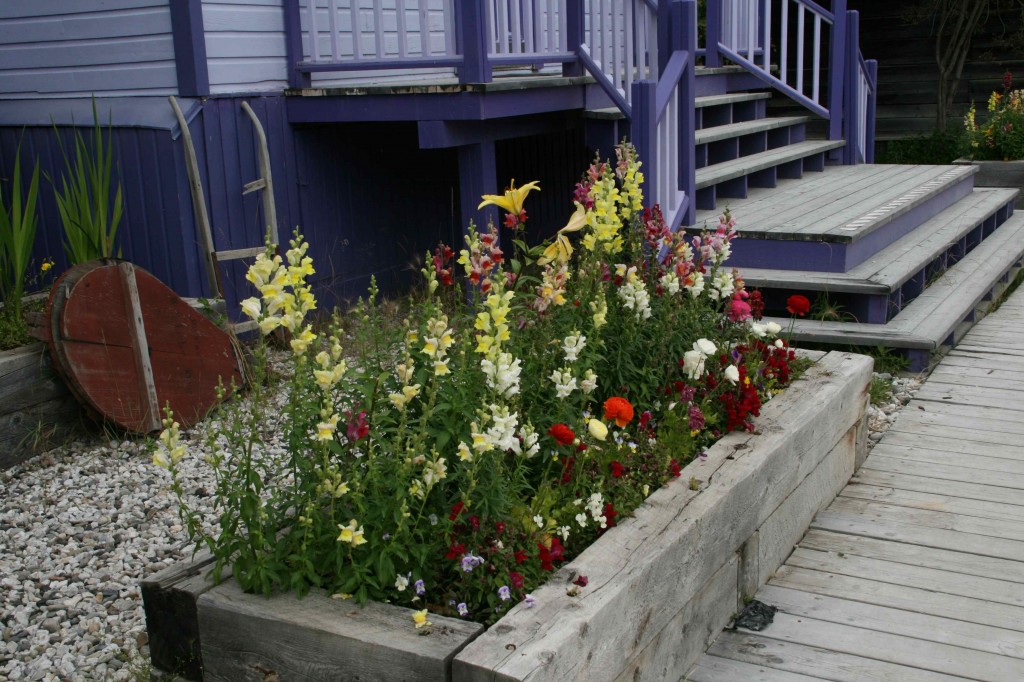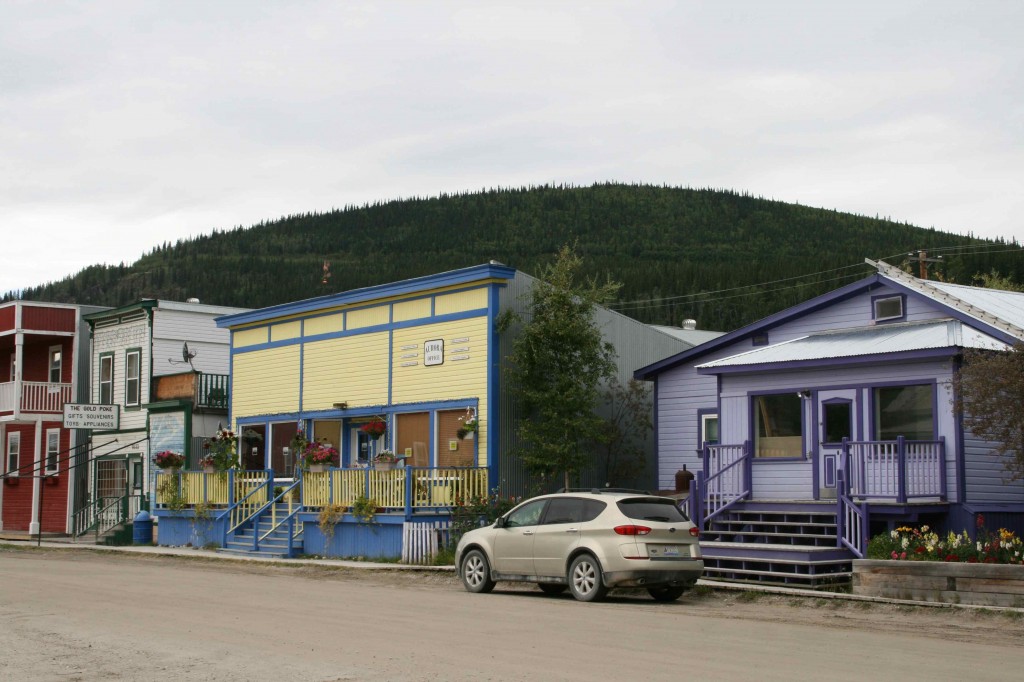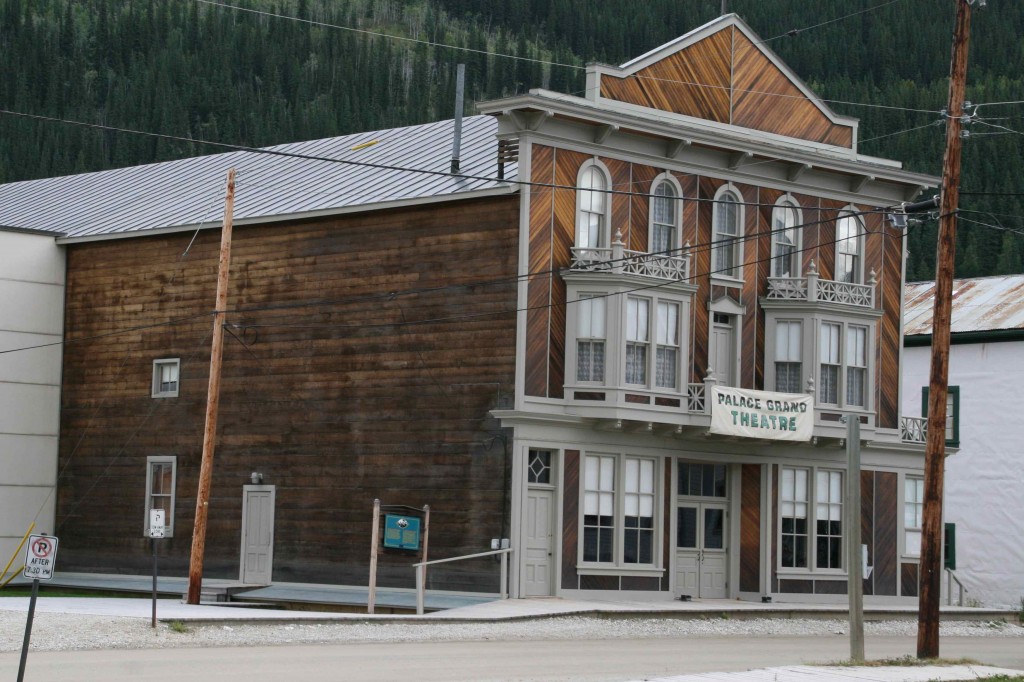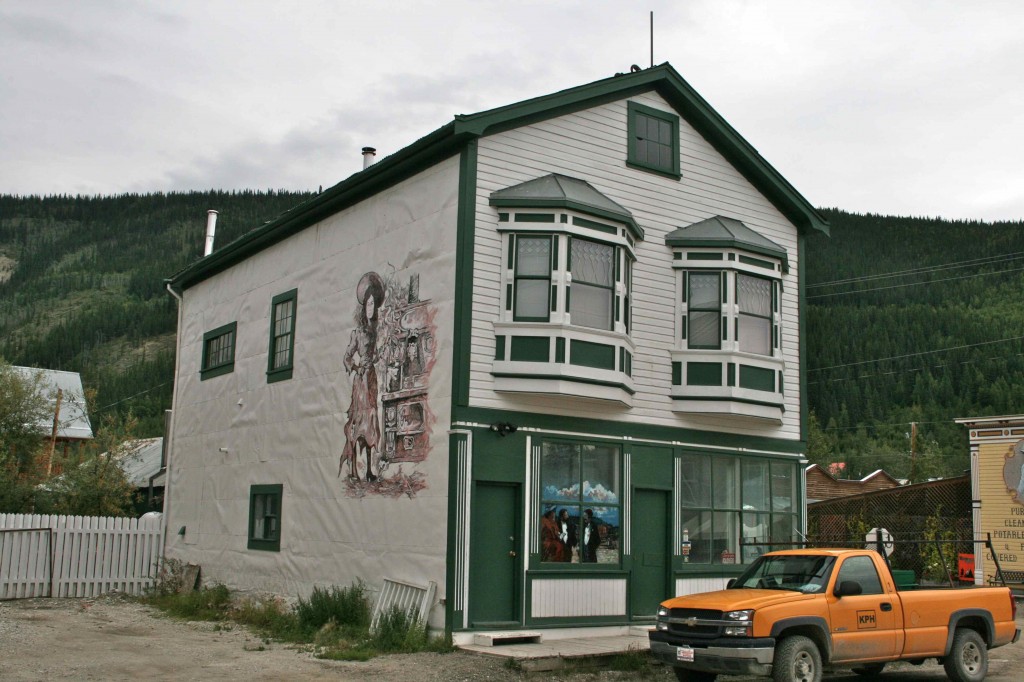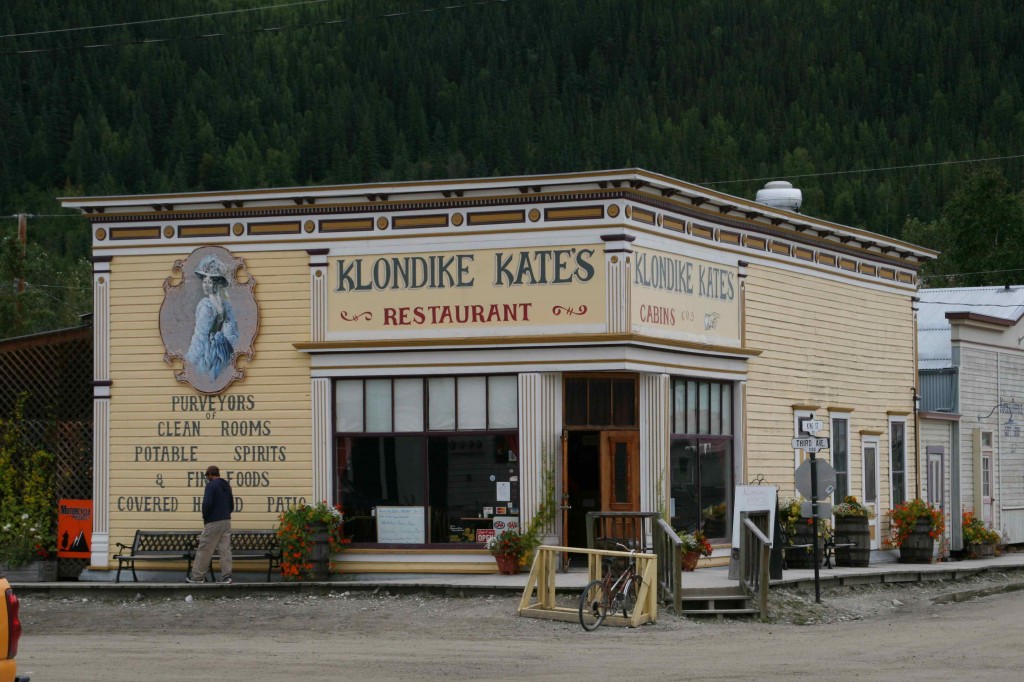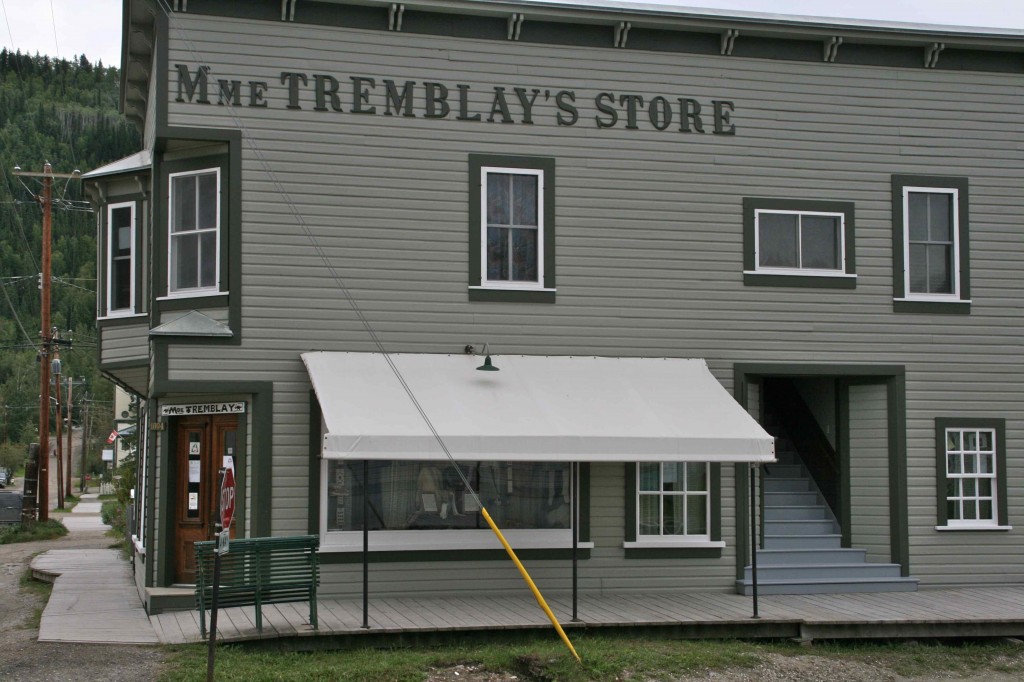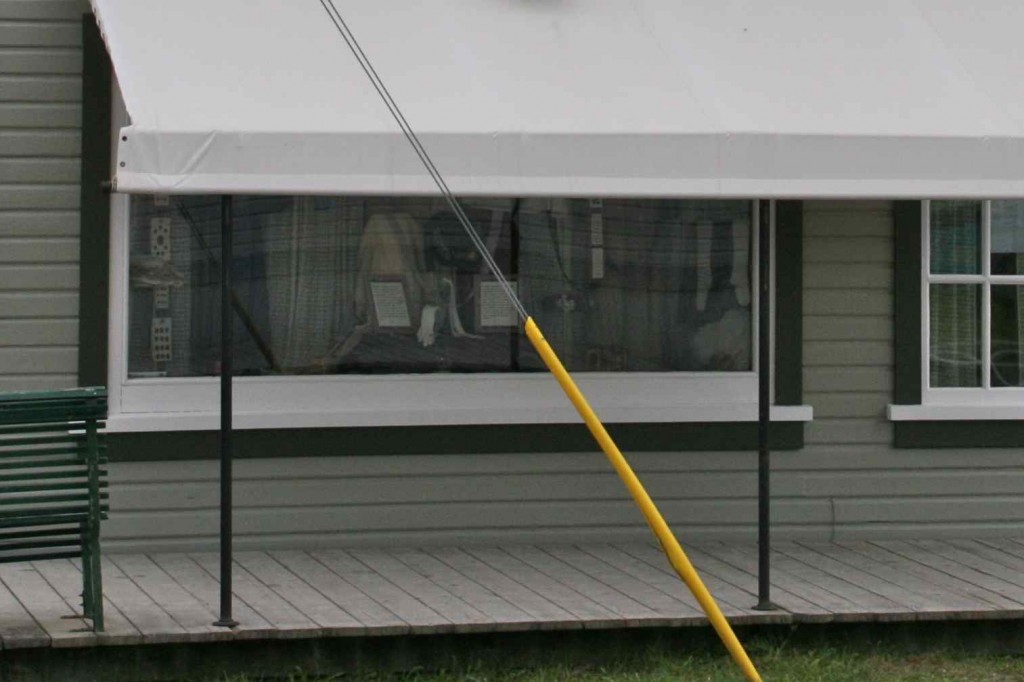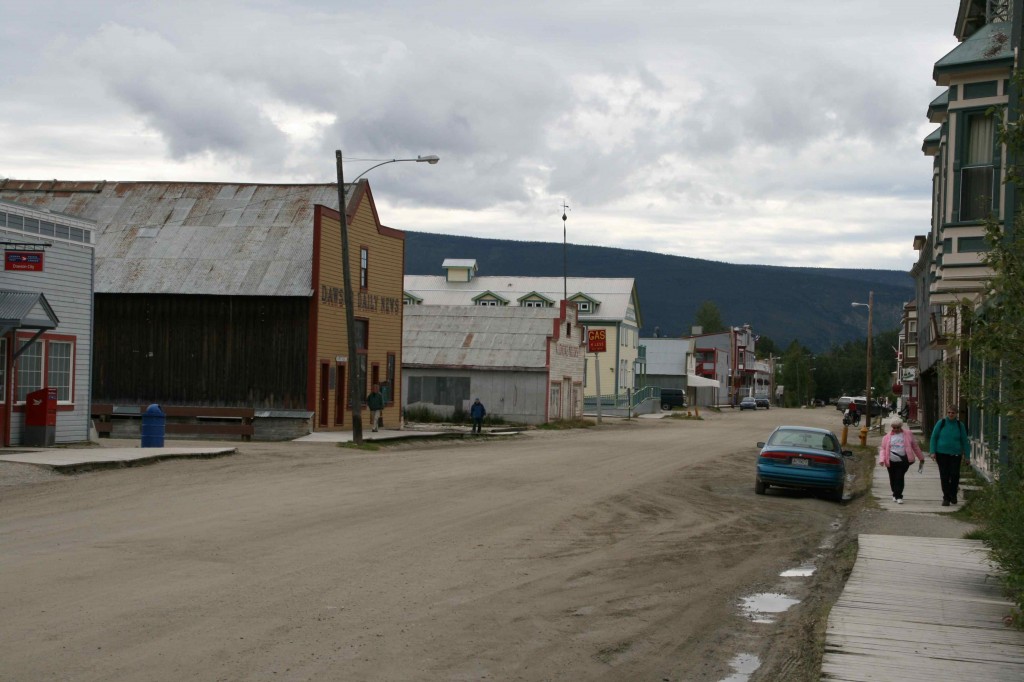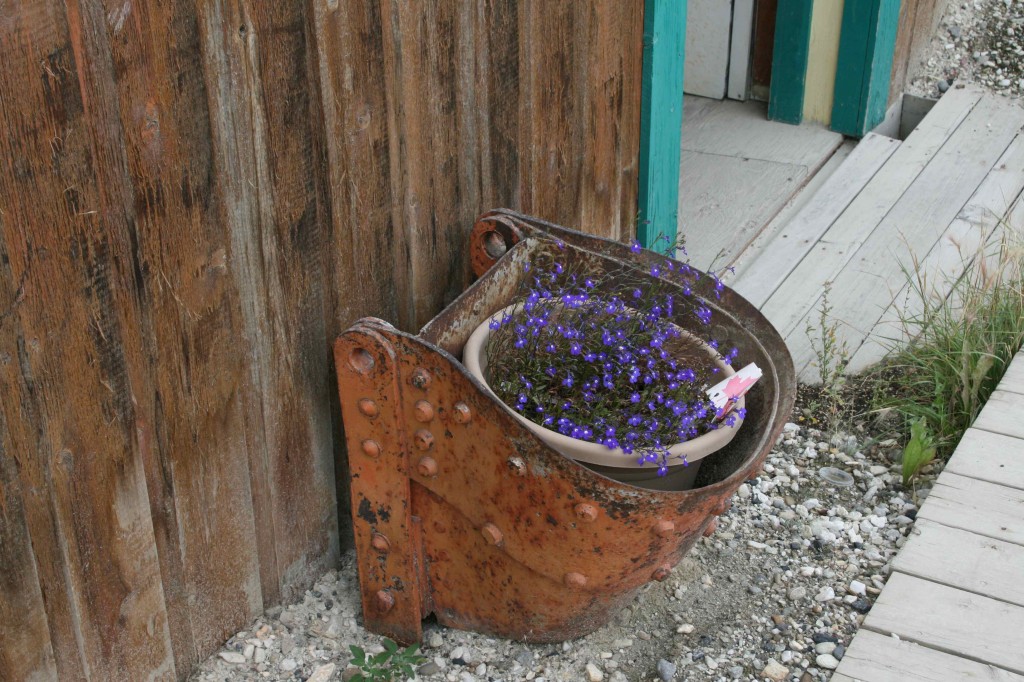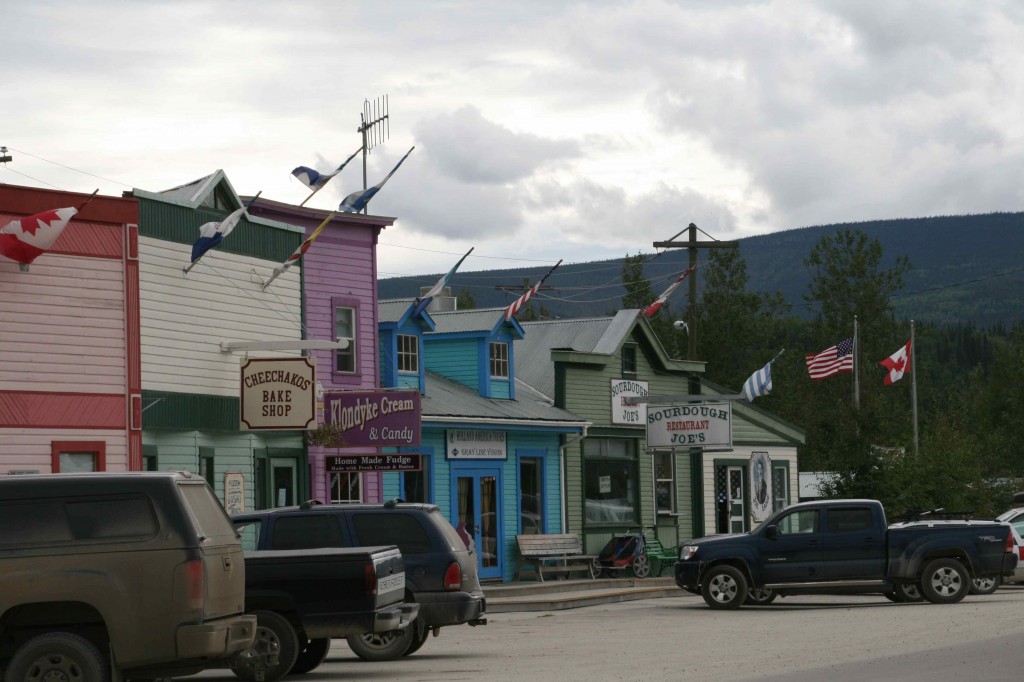Traveling down Front Street in downtown Dawson proves to be more of a challenge than we ever expected. As Ed steps on the brake, his foot goes all the way to the floor. Fortunately we are moving at a nice sedate speed of about 10 miles an hour on a flat street. Front Street has a lovely park between it and the river that has some nice large parking spaces.
The Jeep is easy enough to unhook if we can just find it under all the dirt. The windshield is so dirty from the drive over the dusty, rainy road that it is almost opaque. It is still good enough to get us down the road about a mile and a half to the Bonanza Gold RV Park.
Fortunately it is very flat road. We are able to return for the RV and safely move it down to the spot in the park. As luck would have it, the only place in town that works on RV’s is the Napa store directly across the street from the RV park.
First thing on the morning of August 2, Ed walks across the street to talk with the folks at Napa to see what can be done. They will be able to look at it next Saturday. Today is Tuesday.
After discussion about how long it might take to get parts should we need parts, they are kind enough to say that Thursday they will have time to diagnose the problem so that parts can be ordered if we need them. It will take about three business days to get parts.
I guess we might as well relax and enjoy Dawson. It is a quaint town that is all about the Gold Rush of 1898. A good place to start is the museum housed in the old territorial administration building pictured above.
The displays begin with the history of the First Nation tribes that lived and traded in the Dawson area long before anyone knew there was gold.
The Athapaskans lived on the land, using the resources that they needed to survive. The caribou was used for food, clothing, shelter, and tools. They used only what they needed. They knew it was important not to waste what had been given to them.
The Chilkat walked up established trading trails and rafted the Yukon River to trade with the Athapascan people. This trade between tribes was very important to all the people involved. It is interesting to note that they were able to meet at the designated meeting places without the use of cell phones.
The Chilkat people wanted to keep their long established trade route secret. However, that was not to be. Surprisingly accurate maps were eventually drawn to show where the routes were located.
This display puts into great juxtaposition the equipment that the musher of today enjoys and what the musher in 1898 would have been using. There are none of the dehydrated packets of food or lightweight camping supplies in the forty-mile man’s supplies.
The discovery of gold on Rabbit Creek changed everything!
Remember: Double click to enlarge the picture and click on the back arrow of your browser to return to the post.
Mistakenly? Some would say that was being kind. Those people would say George Carmack stole Discovery Claim.
This is the beginning when it was possible to pick the gold up out of the stream with no work hardly at all.
The man who started all the craziness.
Crime in Dawson was much less than in most mining camps.
The idea of using only what was needed and never wasting what was given you was not part of the white man’s philosophy. The hunting and trapping were to lead to the near extinction of some of the animals.
Now this is just plain crazy! We have watched movies with the dog sleds out on the frozen tundra in winder. Riding a bike across that barren landscape would be the act of a crazy person.
The automobile made it to Dawson before the road did.
I’m not sure they make or have ever made enough clothes or covers to keep me warm at -50 degrees!
The photos of men hauling supplies over Chilkoot pass are chilling. One man would have to make as many as a dozen trips up the pass carrying over a hundred pounds of supplies on his back in order to pack in the year’s worth of provisioning required by the Canadian Mounties.
The link below has several pictures of the chain of men moving up the pass laden with their supplies. I read that if you got out of line to rest a bit it might be hours before anyone let you back in. One old-timer recalled that the line of humanity moving up the pass was the one image that would stand out in his mind to his dying day.
Maybe we could learn something from this?
As the ladies of quality moved into Dawson, the soiled doves were obliged to move out of town. It was not seemly to have a proper lady be subjected to the likes of the “other” sort.
She certainly doesn’t look like a “soiled dove.”
Now this one looks like she might have been one of the “shady ladies”!
The museum in Dawson is really extensive on the subject of gold. They did a fun presentation on how a “shaker” box works. The claims on the hillsides did not have access to water. It is necessary to sluice out the gravel with water to find the gold. Hauling gallons and gallons of water up the hill was not practical; so the shaker box was invented. The water would be poured over the gravel in the shaker box, the box would be rocked back and forth (shook) and the gold would be found (hopefully) and the water could be reclaimed to be used for the next load of gravel.
Today we are taking a drive a short distance from the RV park to Discovery Claim, where it all began.
Looking at the creek, it is easy to see how the claims could get all mixed up; however, having your lower stake 12 feet further up the valley than your upper stake seems a bit of a stretch to be “accidental.”
We have seen these faces before, Skookum Jim, George Carmack, and Dawson Charlie.
There are people here at Claim 6, just above Discovery Claim, that are actually seriously panning for gold. I have a hard time believing that all the gold isn’t long since panned out of this stretch of water, but who knows, right? The water is cold enough to make your bones ache in your hands while you hold the pan.
The mining towns had electric lights long before the cities further south. The Yukon Gold Company needed the power to operate their dredges. They sold the extra power from their hydroelectric plant to the town.
Dredge No. 9 is under construction in the picture above. These dredges are huge.
It doesn’t pay to laugh at what you don’t know.
The miners would spend all winter digging down to bedrock. If they found “color” they would dig a “drift” to follow that vein of gold. They would haul up the dirt in buckets, not knowing what they had until the following spring when they could sluice the gravel through a rocker box to find any gold. Maybe they worked all winter for a fortune. Maybe they worked all winter for nothing!
This is where it all happened. Today it looks quiet and peaceful in this one little spot. There are mining operations going on up and down this creek however. As you drive along the road that parallels the water, you see a lot of “no trespassing” signs.
We are going to tour Dredge No. 4. These huge machines are fairly simple in design, and the design did not change much over time. The original engineers got it right the first time.
The right side of the diagram is the gold-bearing gravel. The bucket excavator is a row of buckets on something akin to a bicycle chain so the buckets are continuously scooping gold-bearing gravel up into the gold-saving sluice. The gold is sluiced out of the gravel, and the gravel is moved out the back on the tailings stacker. The whole dredge floats on a man-made pond. The pond moves forward with the dredge. As the dirt is removed from the front, it is returned to the back and the water and dredge move forward.
We are sitting right under this raven’s nest to watch the presentation about how the dredge works. The year before this last spring a pair of ravens raised their family in the nest while the tours were going on. They had started the process before the season began and were stuck with the people. This year they chose a different location.
The dredge sank after it retired in 1959. When Parks Canada decided to refloat it and make it into a museum, they had their hands full. The muck and mud it was mired it came up to the dark line you see to the left of the entry door. It was filled with solid ice that had to be removed by manpower. It was the ice that preserved the machinery in the great condition it is in today.
Everything in this dredge is large. These ring gears were too large to fit through the railroad tunnels. They had to come by boat up the Yukon.
This is the tumbler where the gold-bearing gravel was turned and the stuff that was too large to go through the holes went out the back into the tailings.
Our guide has worked in mining for 30 years. She has only been doing tours at the dredge for two years. She knows what she is talking about and is very enthusiastic about her subject. She is really making this a fun adventure.
She related the story of bringing the men who had worked on Dredge No. 4 back for a reunion last year. As she told it, it was a challenge. All of them are pretty old, deaf as door knobs and had difficulty getting around. Of course they would have hearing problems. The conditions they worked in were not OSHA approved. The sound of the buckets digging the gravel, the gravel (many rocks as large as a loaf of bread) tumbling in the separator, and the big stuff moving onto the tailings pile as well as the motors to make it all happen would have made a horrific racket. Hearing protection had not been considered necessary when all this was going on.
This is the control room where business was handled. The various levers operated the bucket chain, raised and lowered the depth of the digging, controlled the tailings stacker. A bell system (another noise maker) was used to let everyone of the rig know when something was changing. There were only four men needed to work the rig.
This is the conveyor for the tailings going overboard. The answer is “yes.” Some of the gold-bearing dirt made it out the tailings stacker. With the price of gold at new all-time highs, these tailings are being reworked for what was missed the first pass.
The levers in the control room controlled these cables that made things happen.
Compare the size of the dredge to the pickup truck in the foreground. The digging buckets are not in the picture. They were removed and sit on the ground next to the dredge.
This is the largest structure in Dawson and will probably remain the largest structure in Dawson.
These buckets are large. This operation would have been very efficient.
We have been seeing these buckets all over town.
Another place we have been advised to see is the view from Midnight Dome Road, elevation 2,911 feet.
The scarred hills are evidence of mining in Dawson today. The wormlike mounds in the foreground are dredge tailings from a past operation.
When the dredges were working full-time around Dawson, this place would have been very noisy to live in. The mine owners were only interested in taking care of business, not the ecology. At the time, no one was interested in ecology. The rocks and gravel out the tailings stacker had had all the dirt removed. There was nothing left in the rock for plants to flourish in. These older tailings piles have remained barren of all plants for many years. Later it was discovered that the silt was a problem in the dredge operation; so they decided to dump the silt into the tailings piles. This worked out to be a green solution (albeit that wasn’t the purpose) as it allowed plants to regrow into the dugout areas. Today miners must restore the land to its original state when their mining operation is over.
The weather has been pretty much overcast for our stay in Dawson. Today we are seeing small patches of blue sky that is allowing sunlight to shine in spots.
It is cold and windy as we stand reading this panel. I am fairly certain that the wind blows up on this hill more often than it doesn’t. At midnight it is going to be very cold! No wonder the ministers outnumbered the audience.
Operating on the Yukon River in the 1920′s this steamship is one of the few remaining from that era. None of the steamships of the gold rush era survived.
Walking around Dawson doesn’t take very long. This is a small town.
Everyone here loves their flowers as much as the Alaskans.
The bright Easter egg colors of the old historic buildings keep Dawson from being a dreary place.
Many of the old buildings are not being used for anything today; however, they are fixed up and the front windows have displays that give them the appearance of being in use. Many of the displays are similar to what they would have been in the day.
Purveyors of clean rooms, potable spirits, and fine foods.
Mme. Tremblay’s store is an excellent example of a building being fixed up but empty. The windows display items that would have been for sale in the store when it was a going concern.
As quoted from the Dawson City Web Site:
“A group of local citizens keen to promote tourism formed the Klondike Visitors’ Association in the late 1950s. Recognizing that gambling was a major part of Dawson’s Gold Rush history, the association obtained a special gambling licence from the Canadian Government and in the early 1970s began running casino nights on the dry-docked S.S. Keno.
Today, Dawson City’s world famous non-profit gambling hall is named after bona fide dance hall queen Diamond Tooth Gertie. During the Gold Rush of 1898, in order to distinguish herself from numerous Klondike kings and queens, Gertie Lovejoy wedged a sparkling diamond between her two front teeth. Any discomfort this caused paid dividends. Instead of working the creeks for her riches, Diamond Tooth Gertie made her fortune by mining the lonely prospectors who readily opened their gold pokes in return for her affections. In Dawson City today, Gertrude Lovejoy’s moniker lives on at the town-run Diamond Tooth Gertie’s Casino.
Replete with cancan dancers and a singing master of ceremonies named Gertie, Canada’s oldest gambling hall gives you a chance to re-live the heady days of Dawson’s Gold Rush era. With three nightly shows by Gertie and her Gertie Girls, Diamond Tooth Gertie’s is today a fixture of fun-filled entertainment where patrons can enjoy a beverage while playing blackjack, roulette, Texas Hold’em poker and an array of glittering slot machines.”
These dredge buckets have been put into service as flower pots all around town.
Jimmy’s Place sums up Dawson — All kinds of Stuff.
We have had a pleasant turn of events. The RV was diagnosed on Thursday. The brakes had overheated on those long, steep downgrades on the Top of the World Highway. When the brake fluid gets hot enough it boils. When it boils, air gets into the brake system. When an air bubble goes through the master cylinder, the brakes fade or fail. The fine fellows at Napa bled our brake lines on Thursday morning. We are back in business and ready to roll. We are a bit wiser. We need to be more diligent about downshifting on those downgrades.
Dawson was a pleasant place to spend a week. There was just enough to do to keep us entertained and not so much that we didn’t thoroughly enjoy our downtime. Of course, it would have been better if we had had internet and/or cell coverage. But maybe that’s okay too. Being checked out of the modern world for a week isn’t all that bad. Of course, that is my opinion. I am pretty sure Ed does not share it. He is a techno junky!
We have learned more than we ever expected to learn about gold mining, the Gold Rush of 1898, and the history of Dawson. I wouldn’t have missed it. Life is a gamble. Life is so good.

